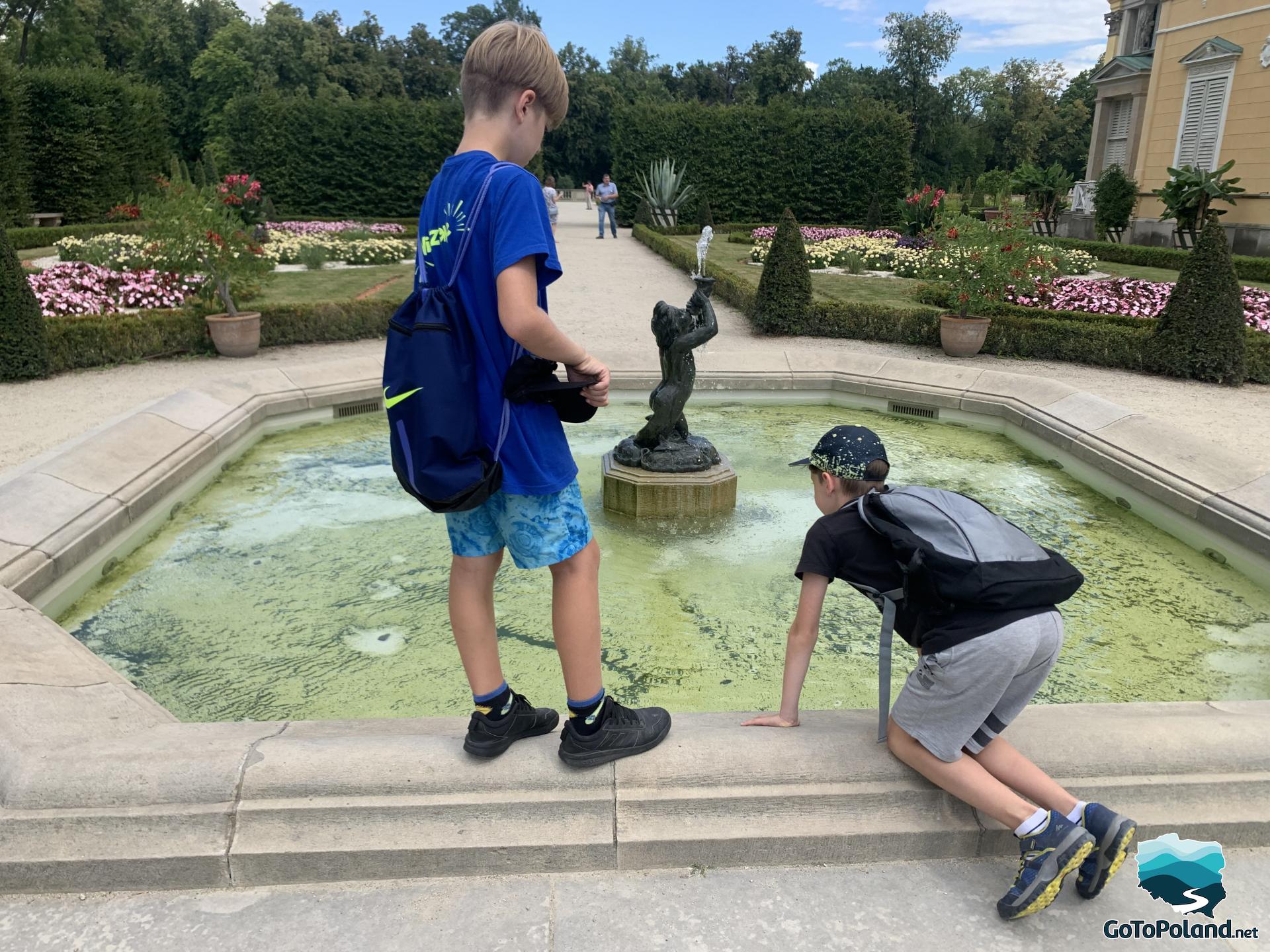
Visit the Wilanów Palace in Warsaw

I really did not know what treasures we have in our capital. I'm writing this with shame and embarassement…… but a man learns from his mistakes all the time. I used to be big ignorant, but I am not anymore. I have been to Florence, Venice, Vienna, Prague, Berlin or Milan. I have admired there outstanding palaces, museums, works of art, sculptures, monuments and so on but I didn't realize that here in Poland, in Warsaw we have also great works of art literally.
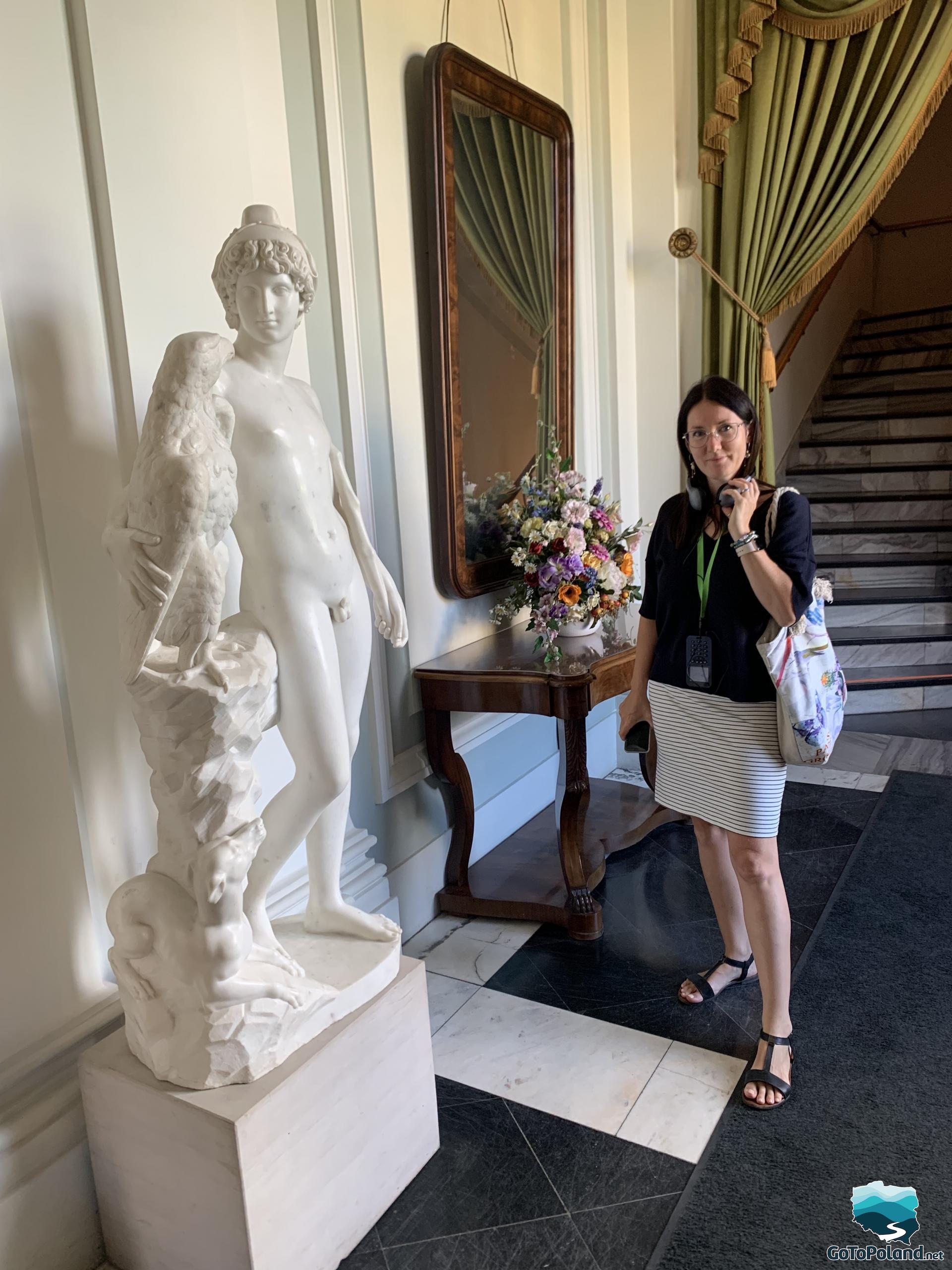
Wilanów Palace is another pearl on our sightseeing route. The baroque Royal Palace was built in the years 1681–1696 for King Jan III Sobieski and his wife Maria Casimire according to the design of Augustyn Wincenty Locci. Over the centuries, the property passed into different hands and changed owners. During World War II, the Germans and Hungarians plundered about 80% of the interior furnishings of the palace, and the palace garden was also destroyed. After the war, the complex became state property. Thanks to conservation work and recovery of a significant part of the collections taken away by the Germans, in 1962 the palace was made available to the public.
Currently, the Museum of King Jan III's Palace is located in Wilanów. The Palace together with the surrounding park and buildings has retained its architectural form, historical and artistic values. In 1994, the Wilanów palace complex with Morysin was declared as a historical monument. It is a place of cultural events, concerts and meetings. There is a beautiful garden next to the palace, many free standing sculptures, a Chinese pavilion and even a "Roman bridge". Visit Warsaw with me.
More information about The Wilanów Palace you can find on Wikipedia
You can also read my other threads about Warsaw: The Royal Castle, Warsaw in a few words and monuments and the Royal Łazienki. If you have some spare time, I recommend you to go to Palmiry.
What to see in the Wilanów?
The biggest attraction in Wilanów is of course the palace built under the watchful eye of King Jan III Sobieski. The palace is built in the Baroque style. An excellent collection of European, Polish and Oriental art is presented in the Wilanów Palace. Jacques-Louis David's "Equestrian Portrait of Stanisław Kostka Potocki" remains the pearl of the collection - the only work of the great painter in Polish collections. Next to the castle there is a wonderful garden, the complex also includes an oriental Chinese pavilion, a Roman Bridge connecting the gardens with the island and a pumping station building inspired by medieval architecture.
What to see in the Wilanów Palace?
Currently, you can visit: Chinese and Hunting Rooms, Warehouse Gallery, Marszałkowa Lubomirska's Hall and Living Room, White Room, Royal Apartments, Great Hall with a collection of antiquities, former rooms of the Sobieski family on the first floor of the palace and a new permanent exhibition in the galleries on the first floor of the palace - "Potocki collecting ". There are also various temporary exhibitions from time to time (it is always worth to see the official website of the Wilanów Palace and check available routes).
Is it worth visiting the Wilanów Palace?
Yes definitely. I highly recommend visiting this place. You can spend many hours there and feel the baroque atmosphere, admire the beauty of art and wonderful interiors. You can also take a walk around the complex, go to Lake Wilanów, rest in the shade of trees on one of the benches or drink coffee in a nearby cafe.
Is one day enough for the Wilanów Palace?
Yes, you can easily see all the monuments of the complex in one day.
Is there a restaurant in the Wilanów Palace?
There is a cafe next to the palace, several restaurants are very close to the palace complex.
The Wilanów Palace opening hours
Palace opening hours for individual guests: daily except Tuesdays 10.00-16.00 (entrance until 15.00).
Group visits and museum lessons will be available daily upon advanced reservation.
What day is free at the Wilanów Palace?
On Thursdays, entrance is free. Tickets are available at the box office, but they are limited for conservation reasons and cannot be booked. The order of applications decides. Entrance to the park is also free on Thursdays, and tickets to the park cannot be booked.
Is the Wilanów Palace open every day?
The Wilanów Palace is open every day, except Tuesdays.
The Wilnanów Palace made huge impression on us. The interiors of the Wilanów Palace greeted us with stunning splendour. They are just unbelievable in their beauty. I hope you can see it in my photos.
But let's start from the beginning :) from St. Anne's Church. It's very close to the Palace.
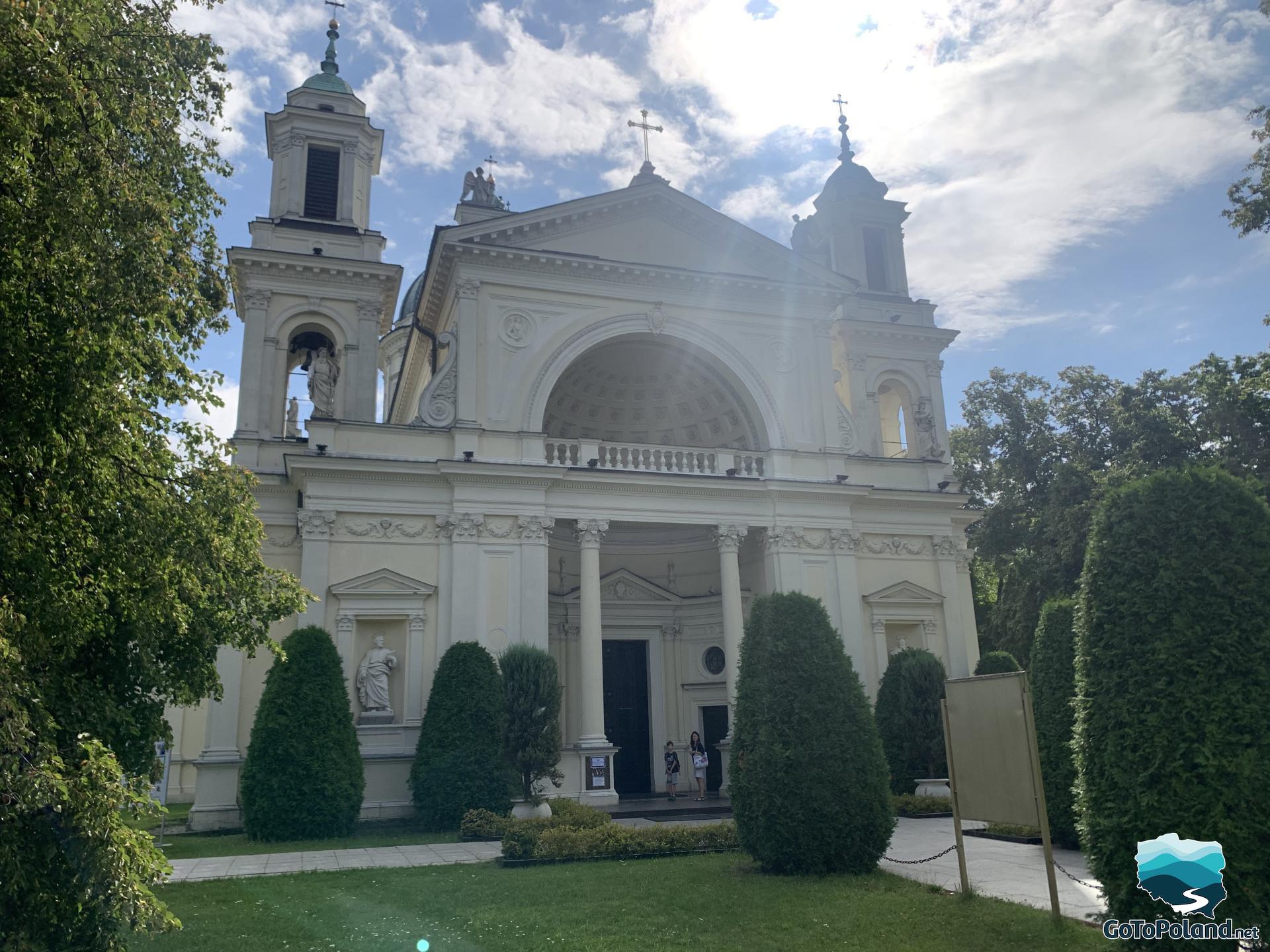
In 1772, the wooden parish church was replaced with a brick church dedicated to St. Anna. The church was erected from the foundation of the then owner of Wilanów - Prince August Adam Czartoryski. In the years 1857-1870, Aleksandra and August Potocki rebuilt and enlarged the existing church (according to the design of the architect Henryk Marconi). The church received a Neo-Renaissance form and is a magnificent temple next to the Wilanów residence of King Jan III Sobieski.
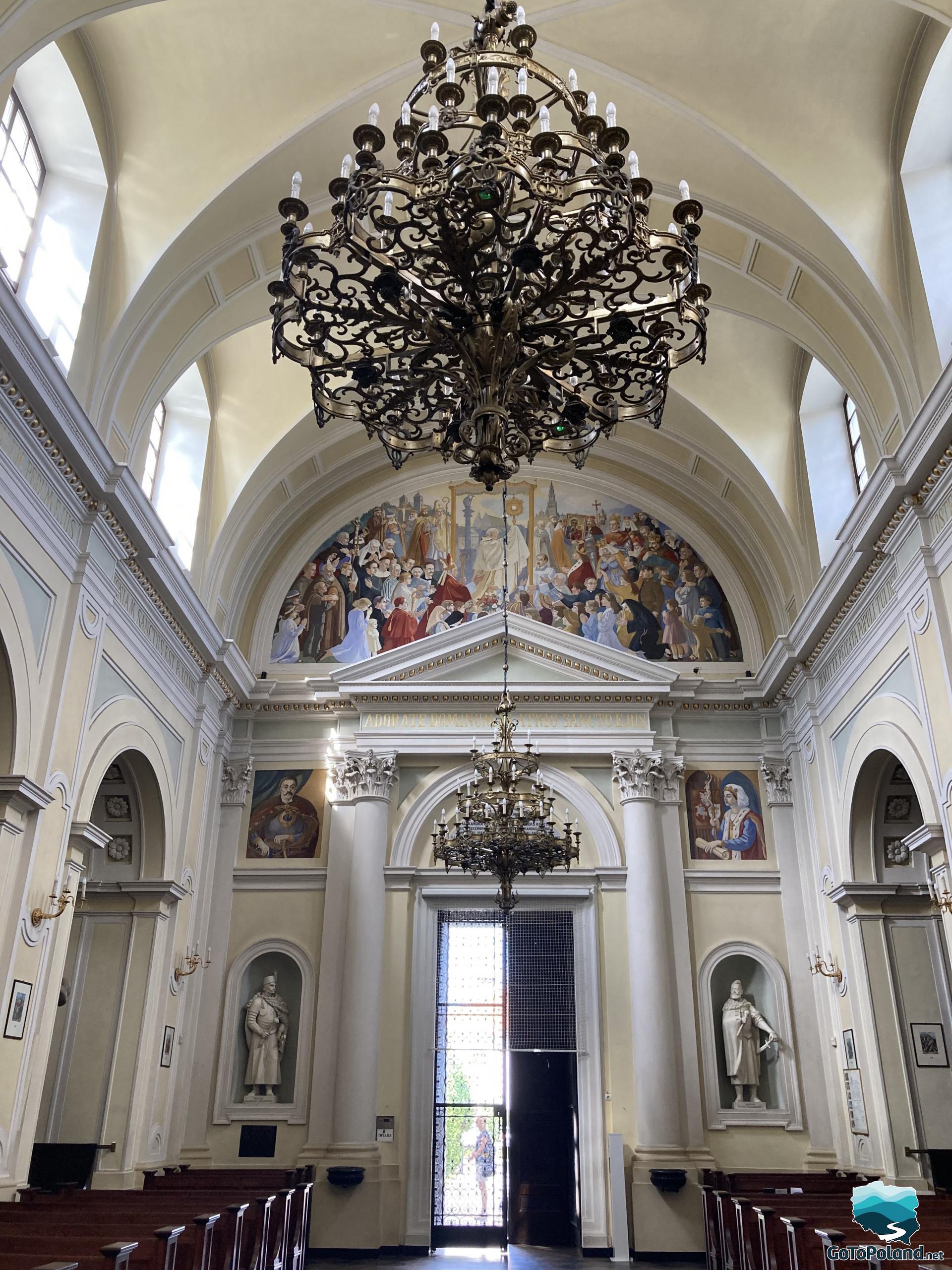
The interior of the church.

A giant mammoth bone found while digging foundations
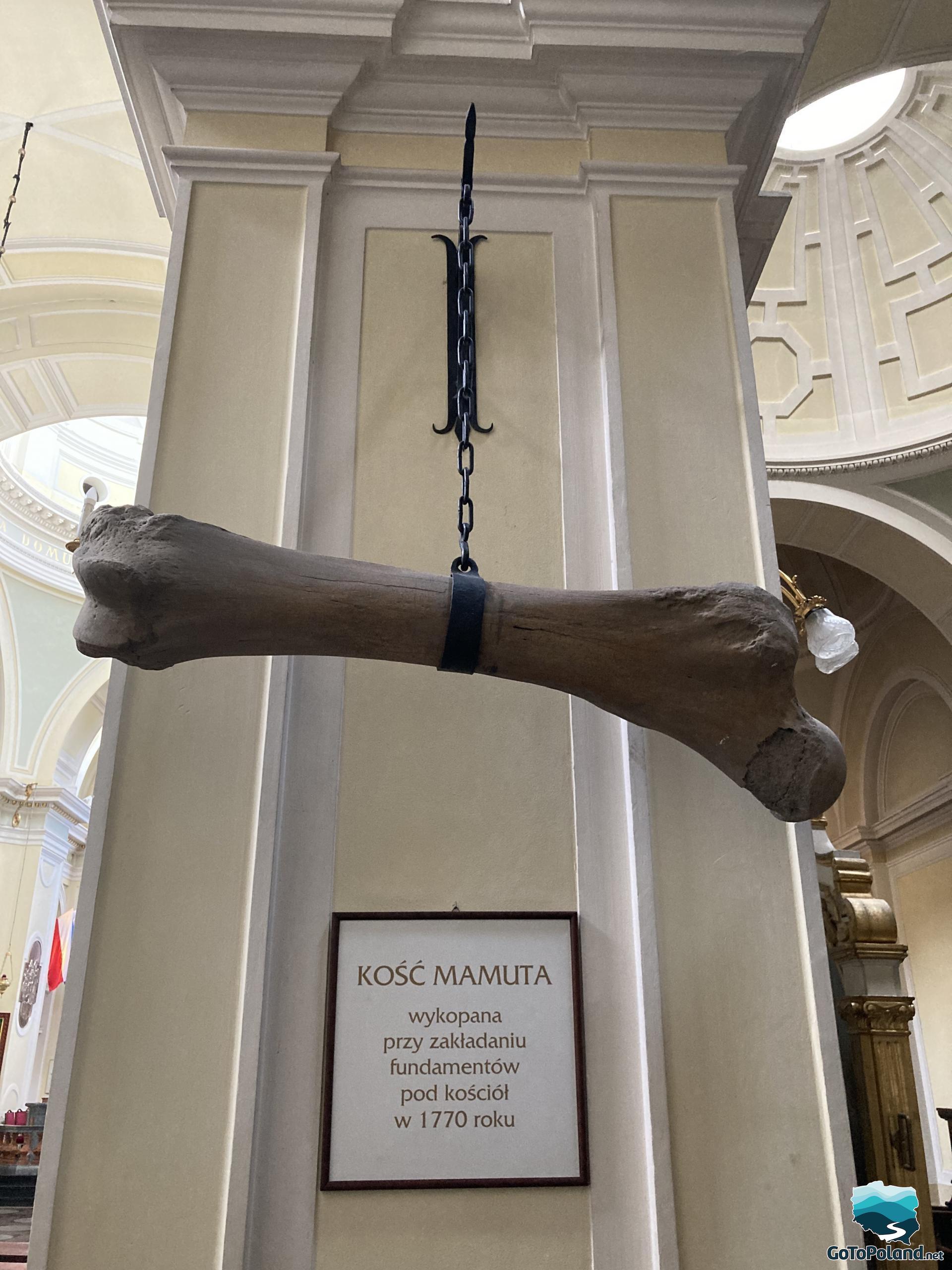
The park around the Palace is quite large with big trees which give a shade in a sunny day.
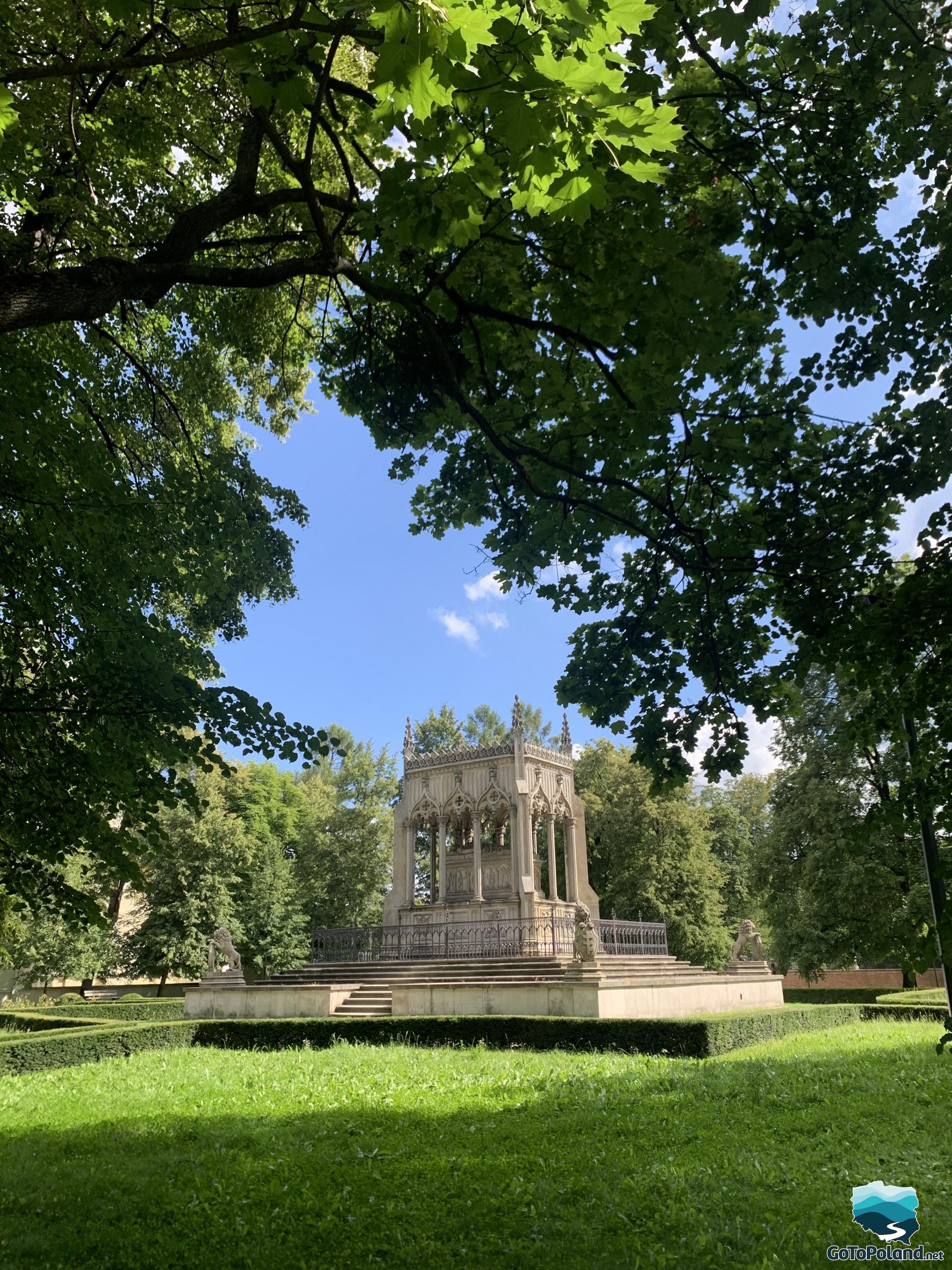
The mausoleum is a symbolic tombstone erected in 1836 for Stanisław Kostka Potocki and his wife Aleksandra by their son Aleksander
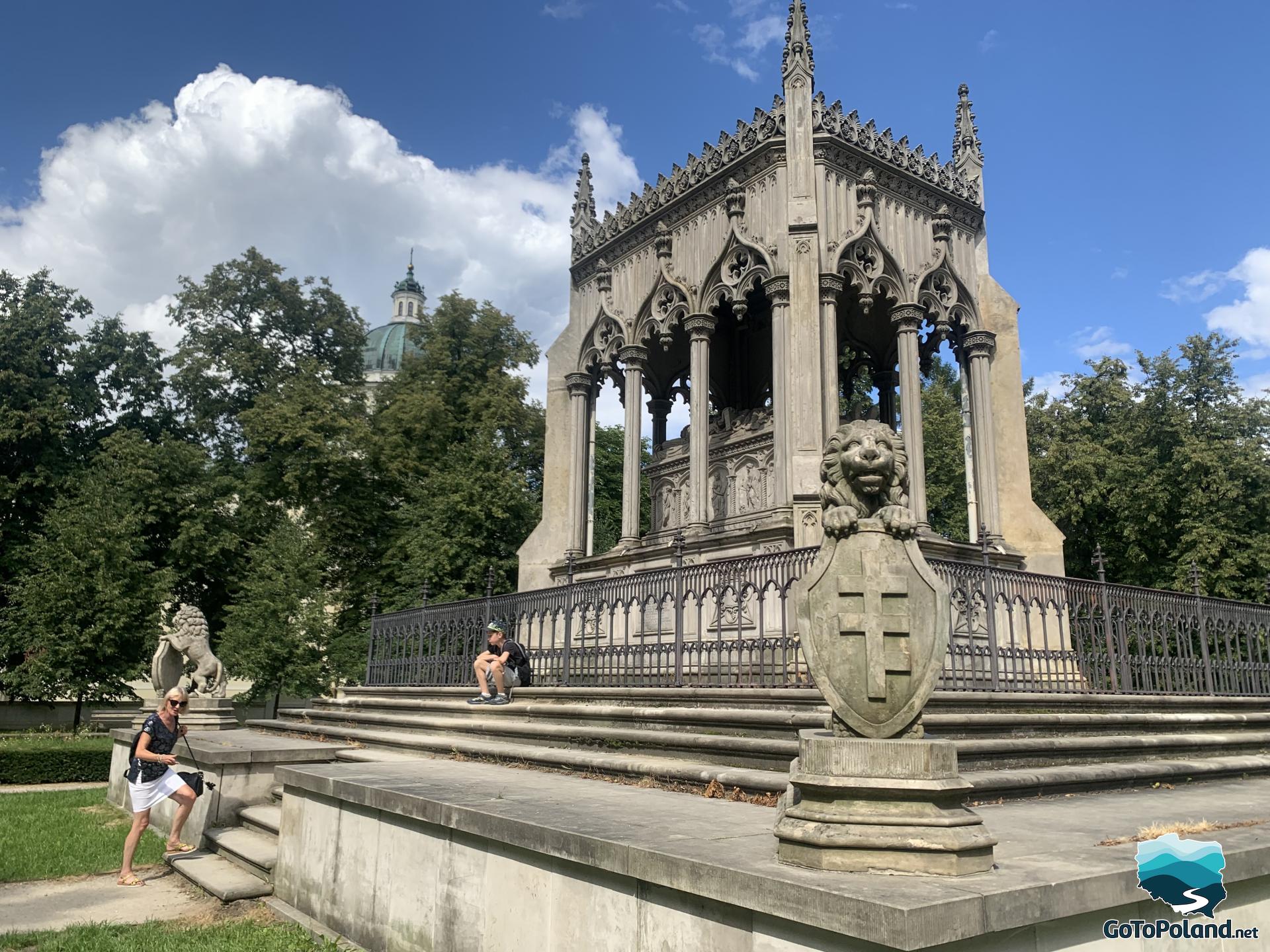
You can spend hours there and admire all the beauty of this magnificent Palace. Just look at these facades with many statues, column capitals and even vases on the roof!
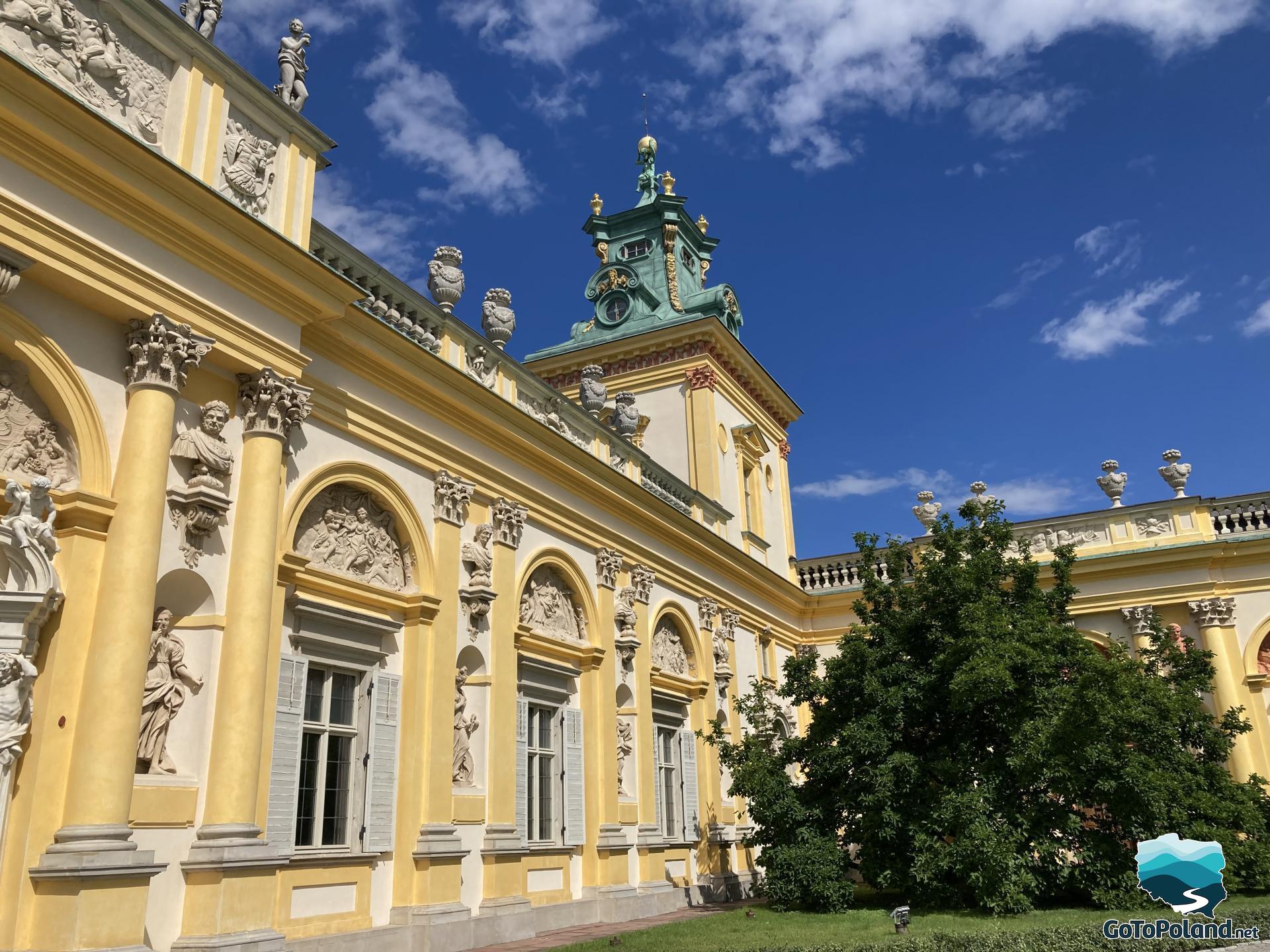
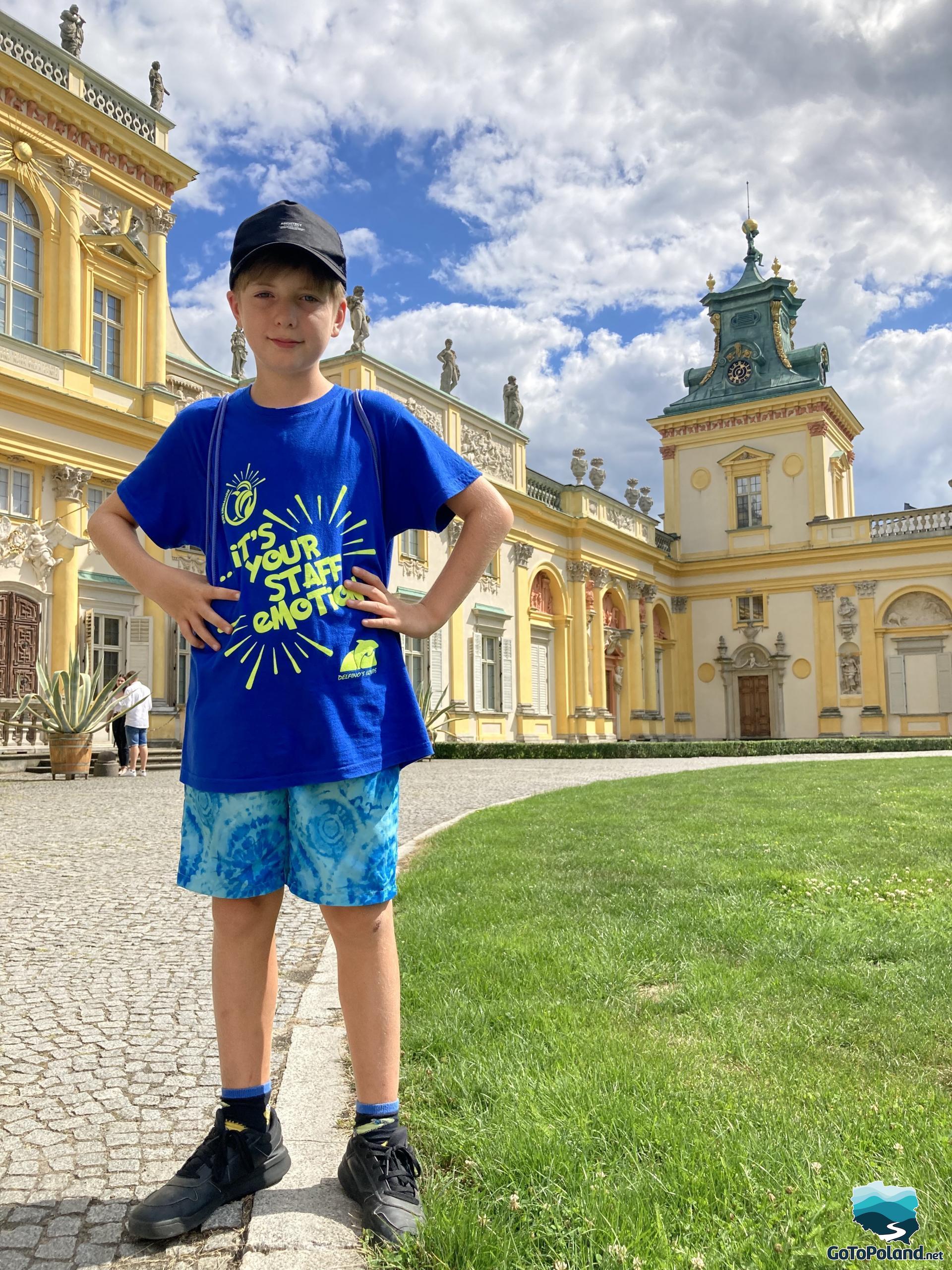
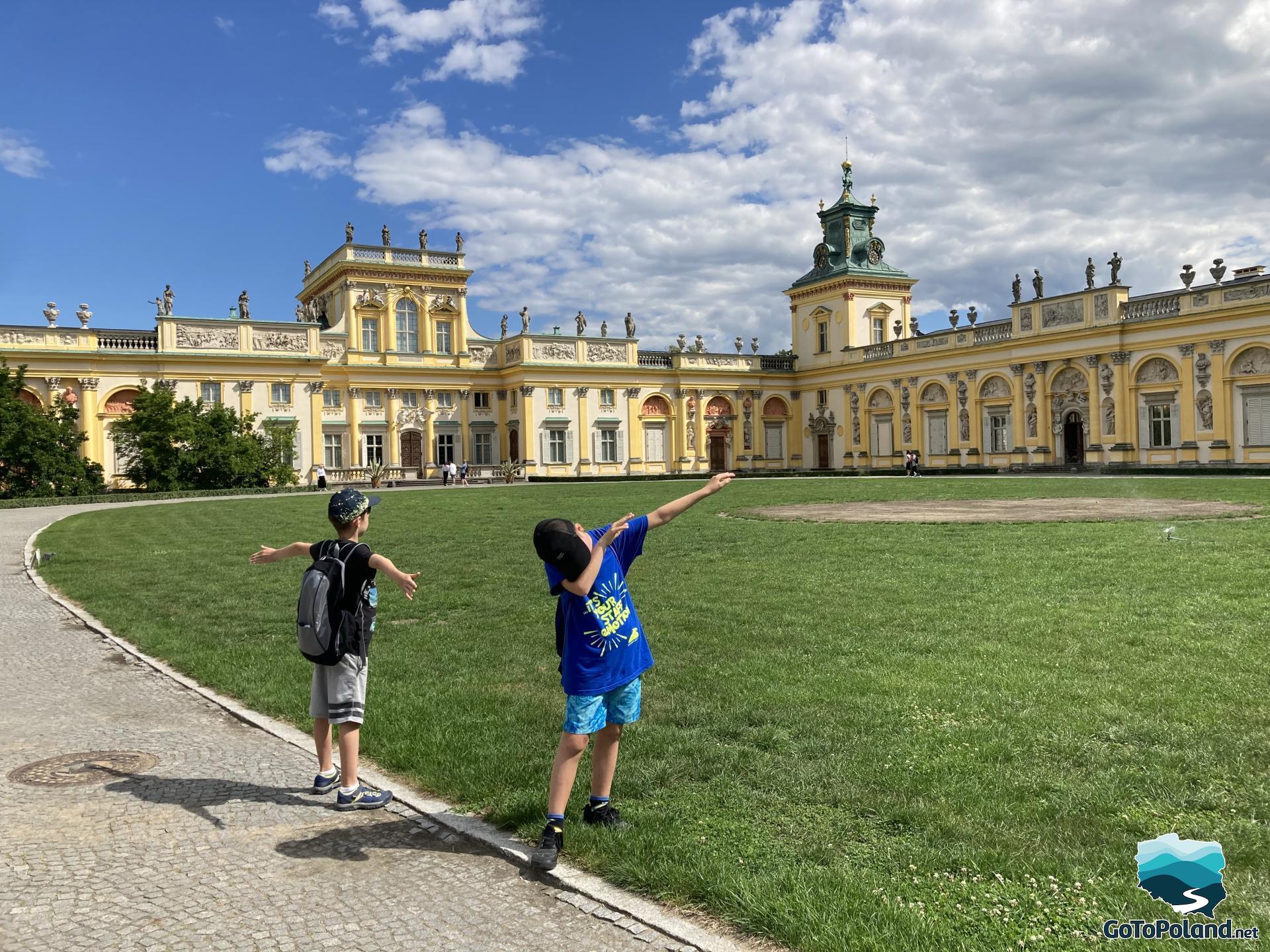
Sometimes it's hard to capture the beauty of a particular building……. the best way is to see it on your own eyes :)
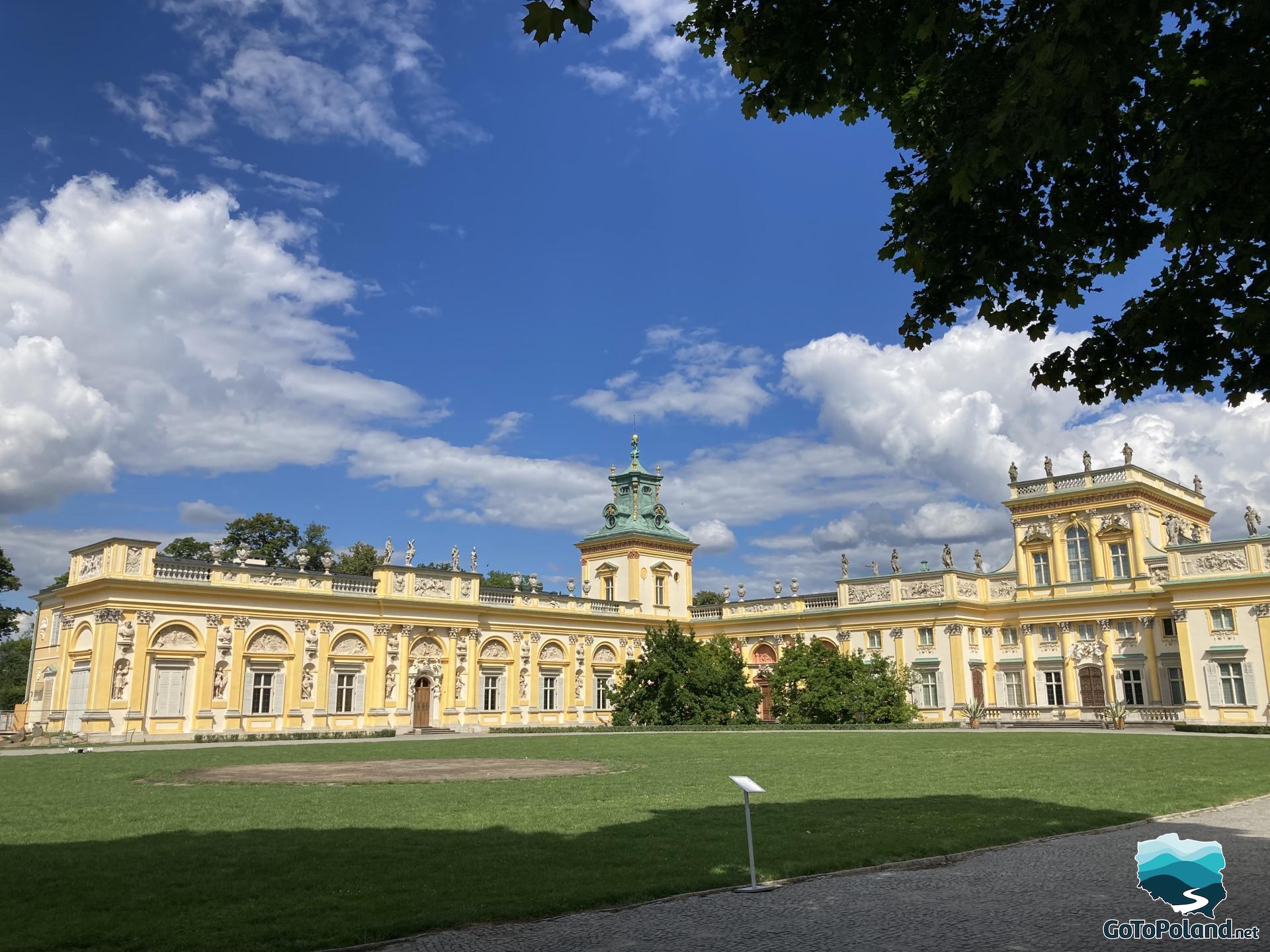
After visiting the palace, we had to gather strength for further sightseeing. It was nice to sit down to drink coffee and eat a tasty cake. I felt like I was transported to those times.
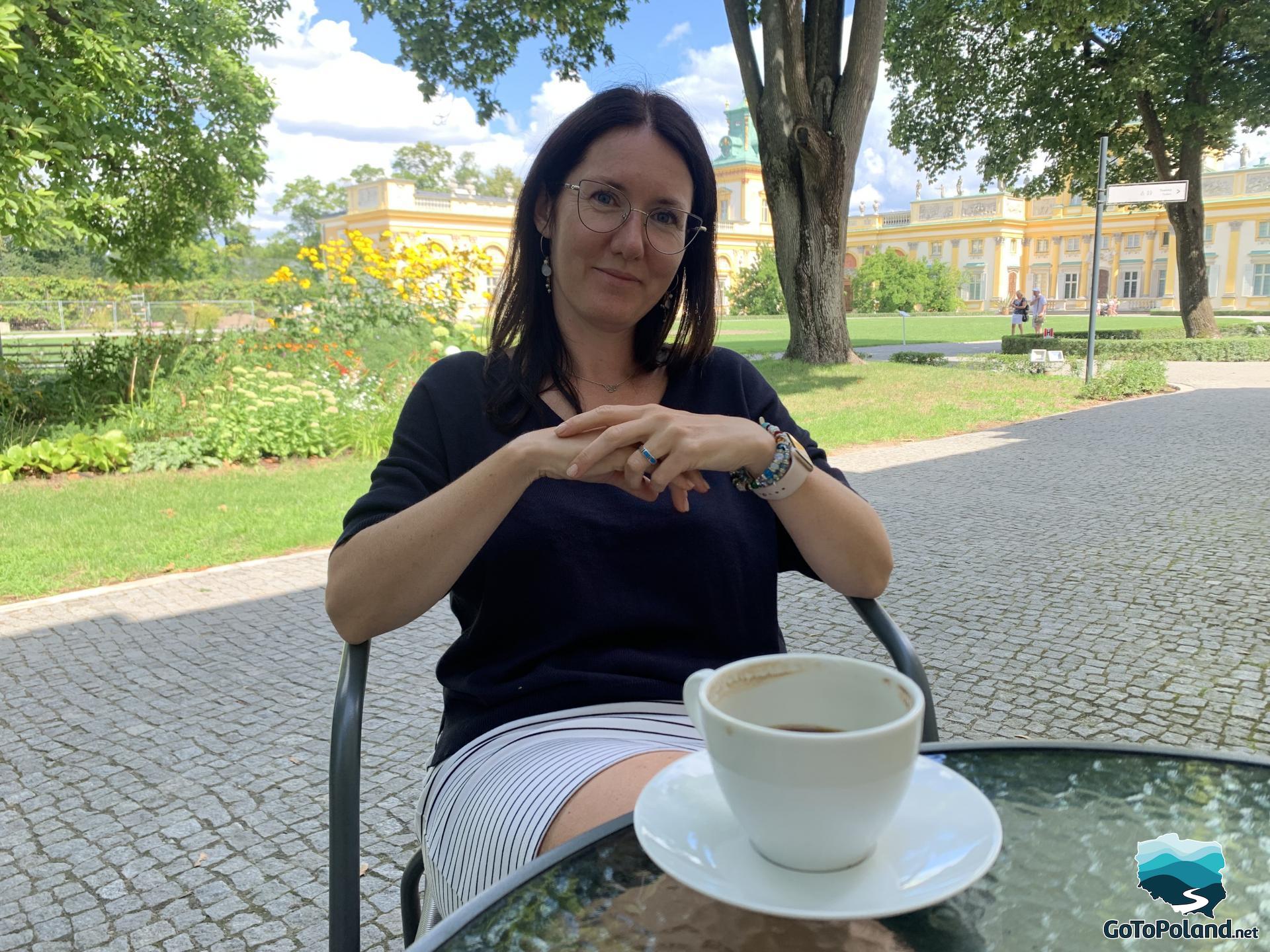
The other side of the Palace.
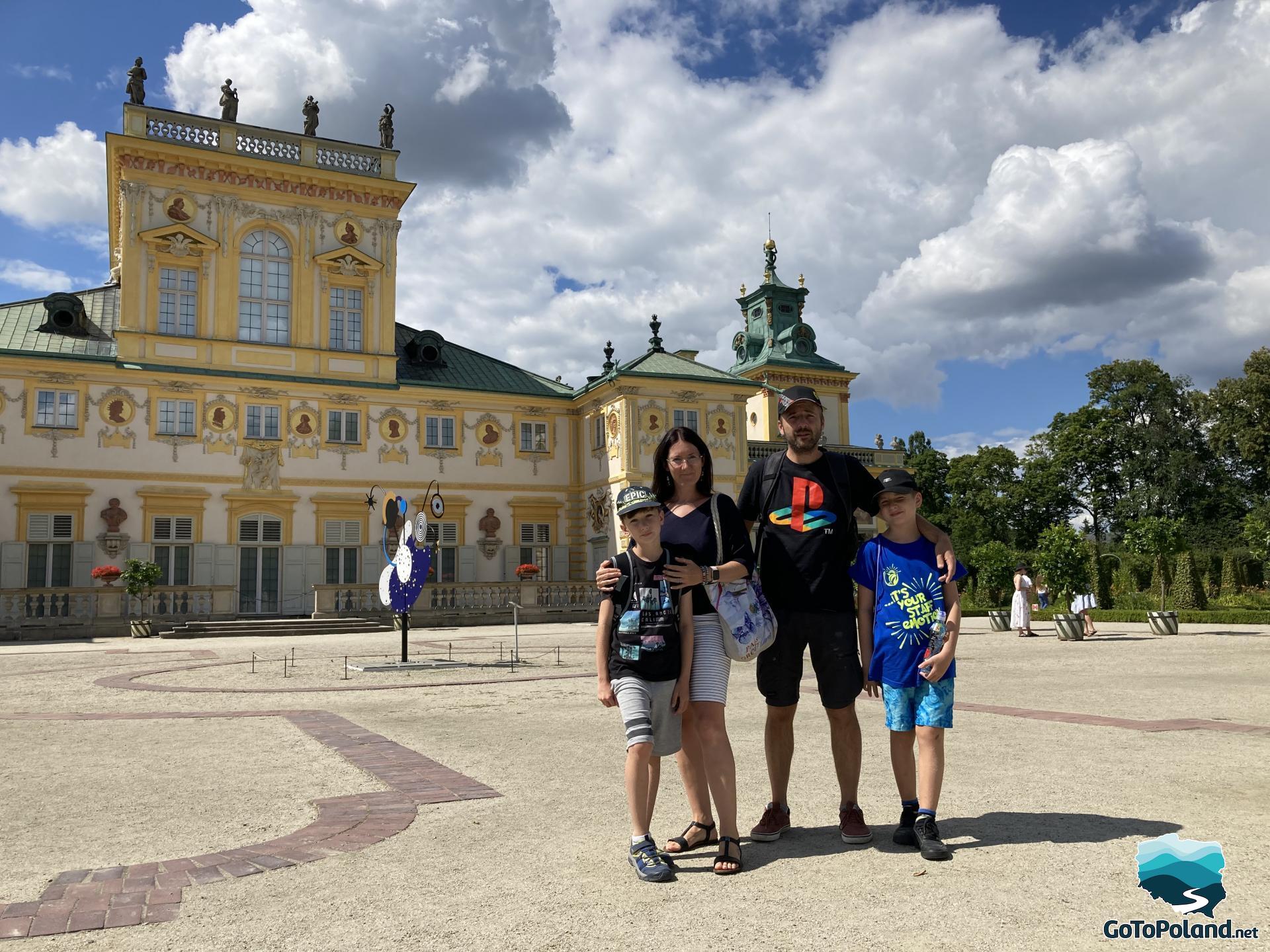
There is a wonderful garden around the Palace.
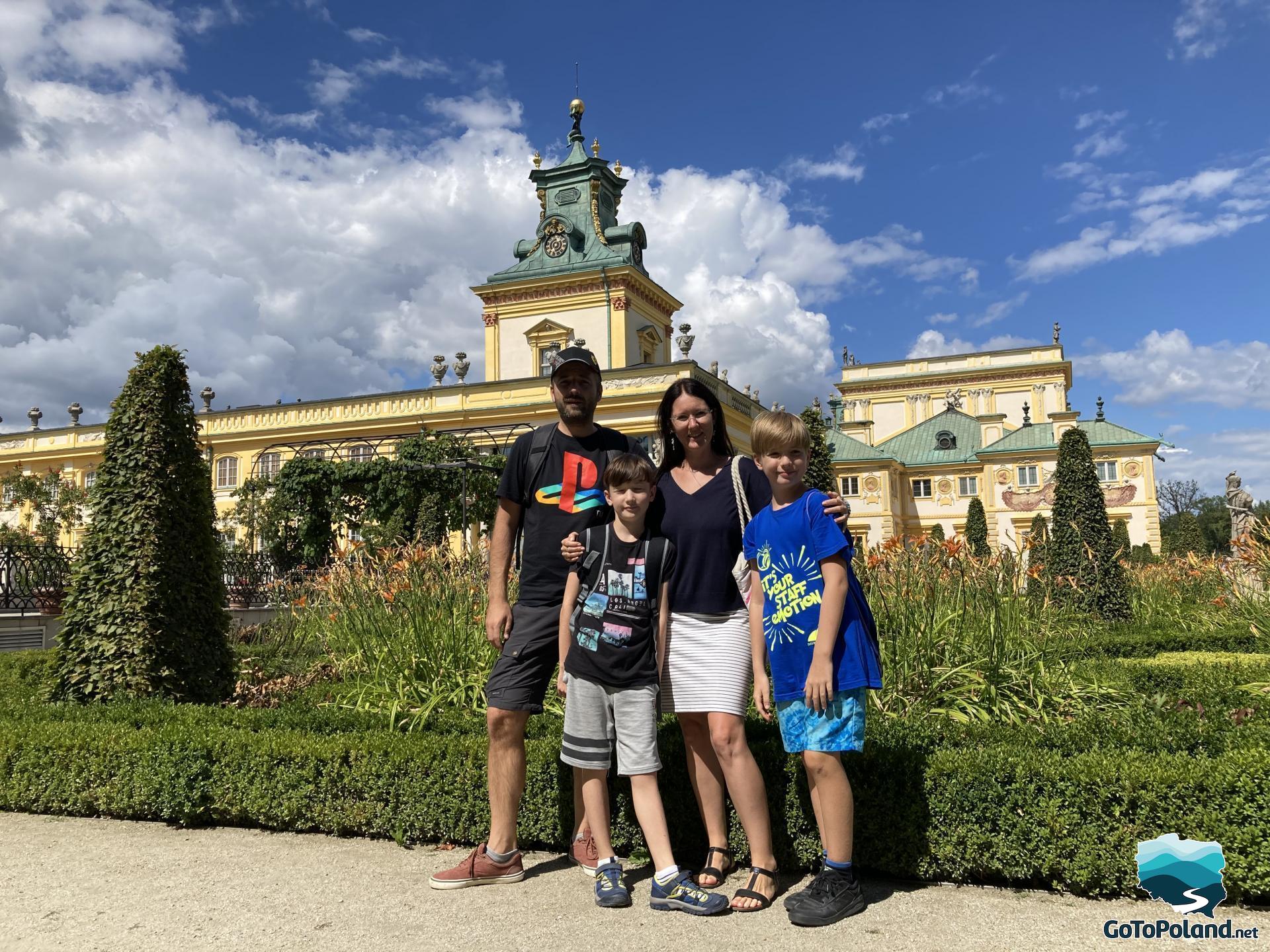
Our selfie in a palaces garden :)
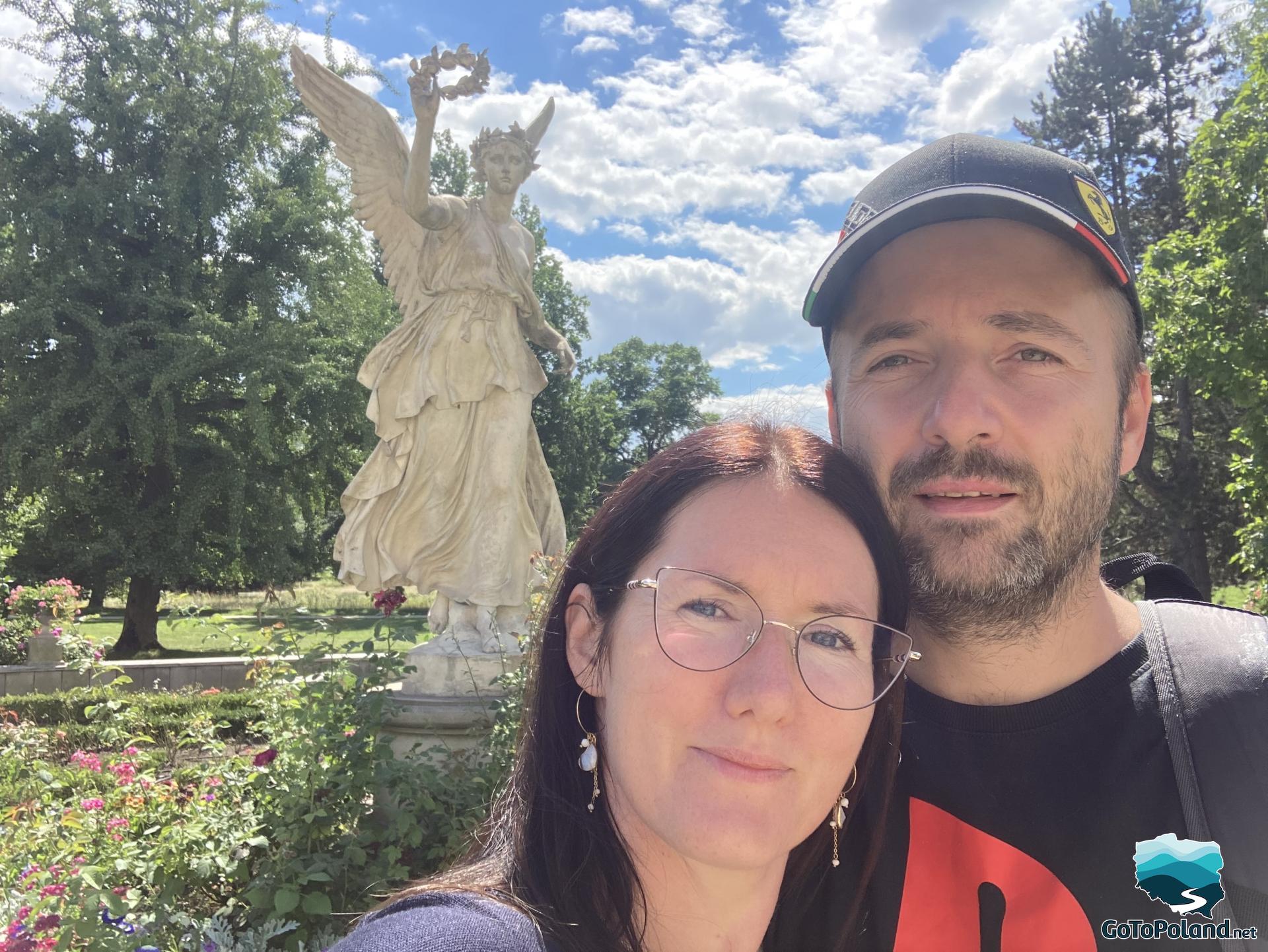
Below are pictures from the inside of the Palace.
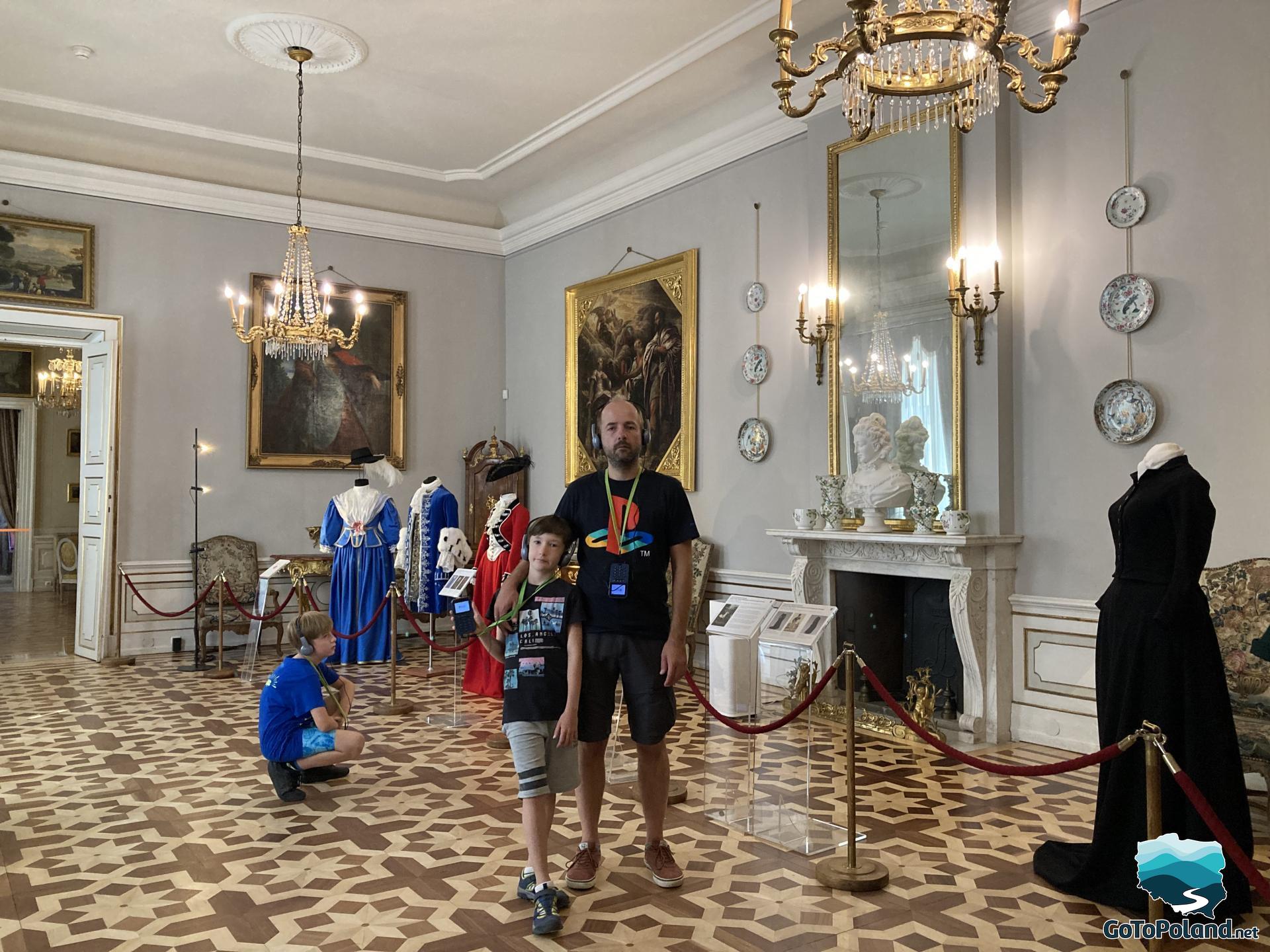


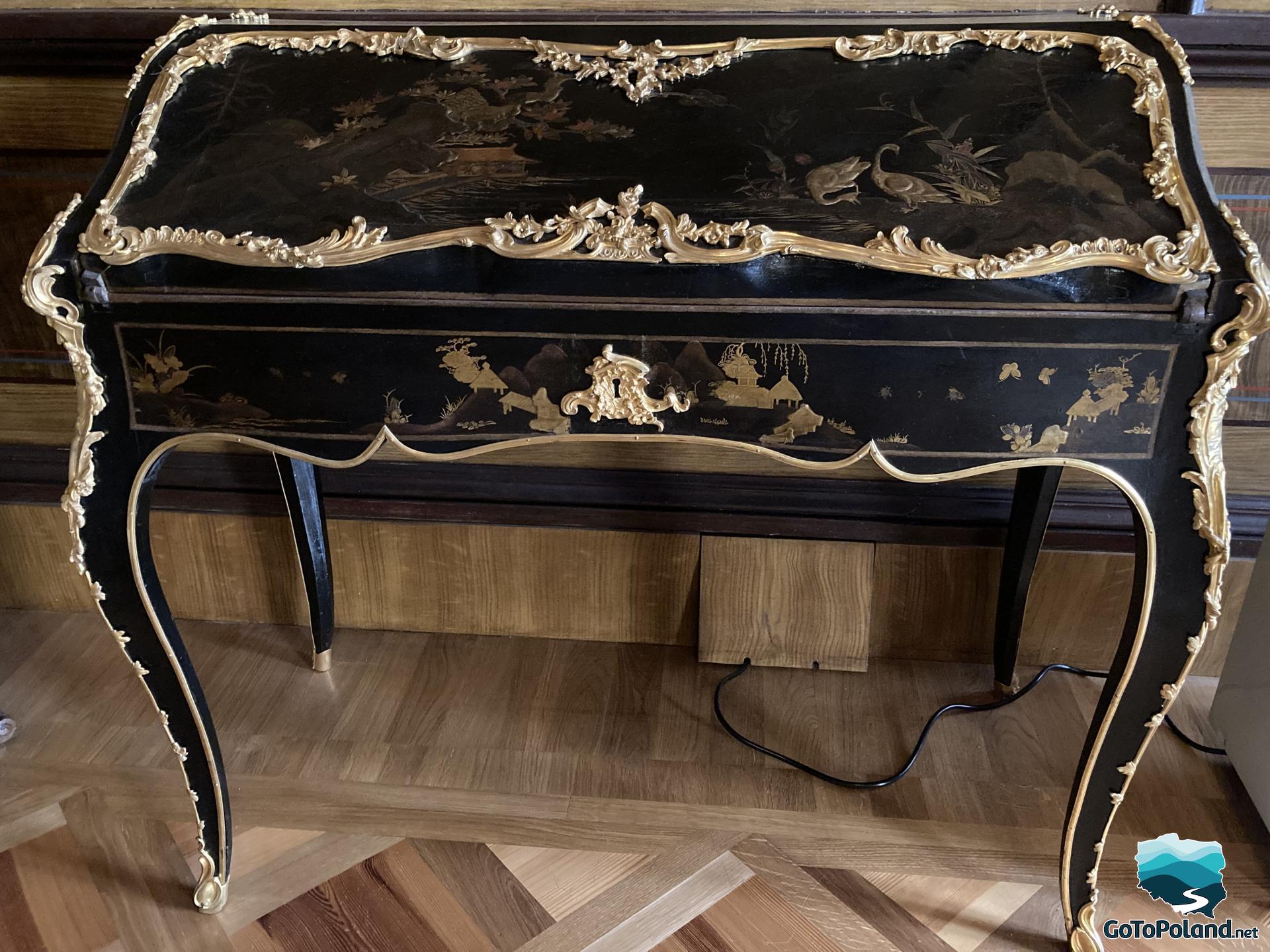
Monumental statue of King Jan III Sobieski.
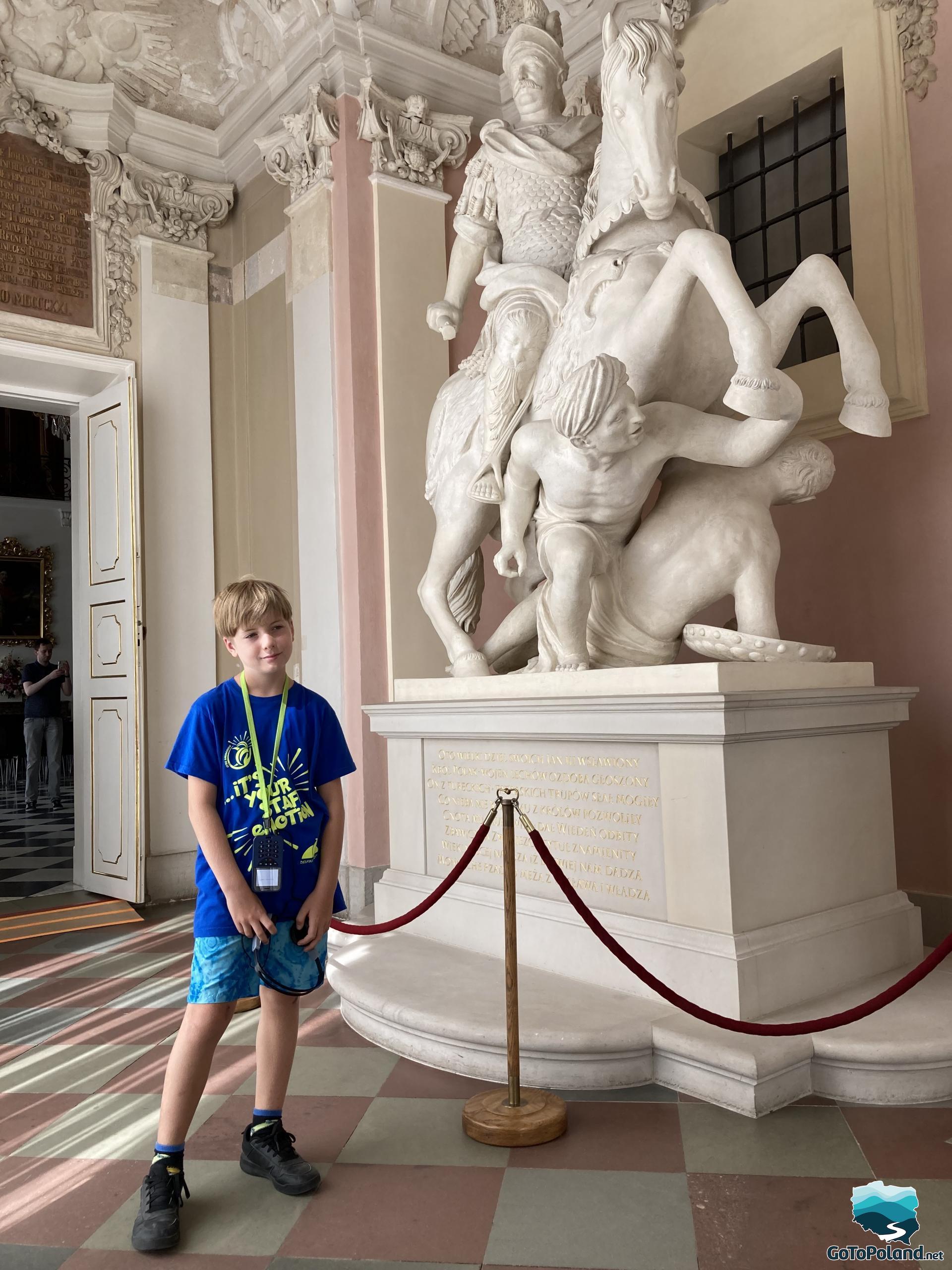
There were so many secret drawers! The element looked unopened, but it was opened.
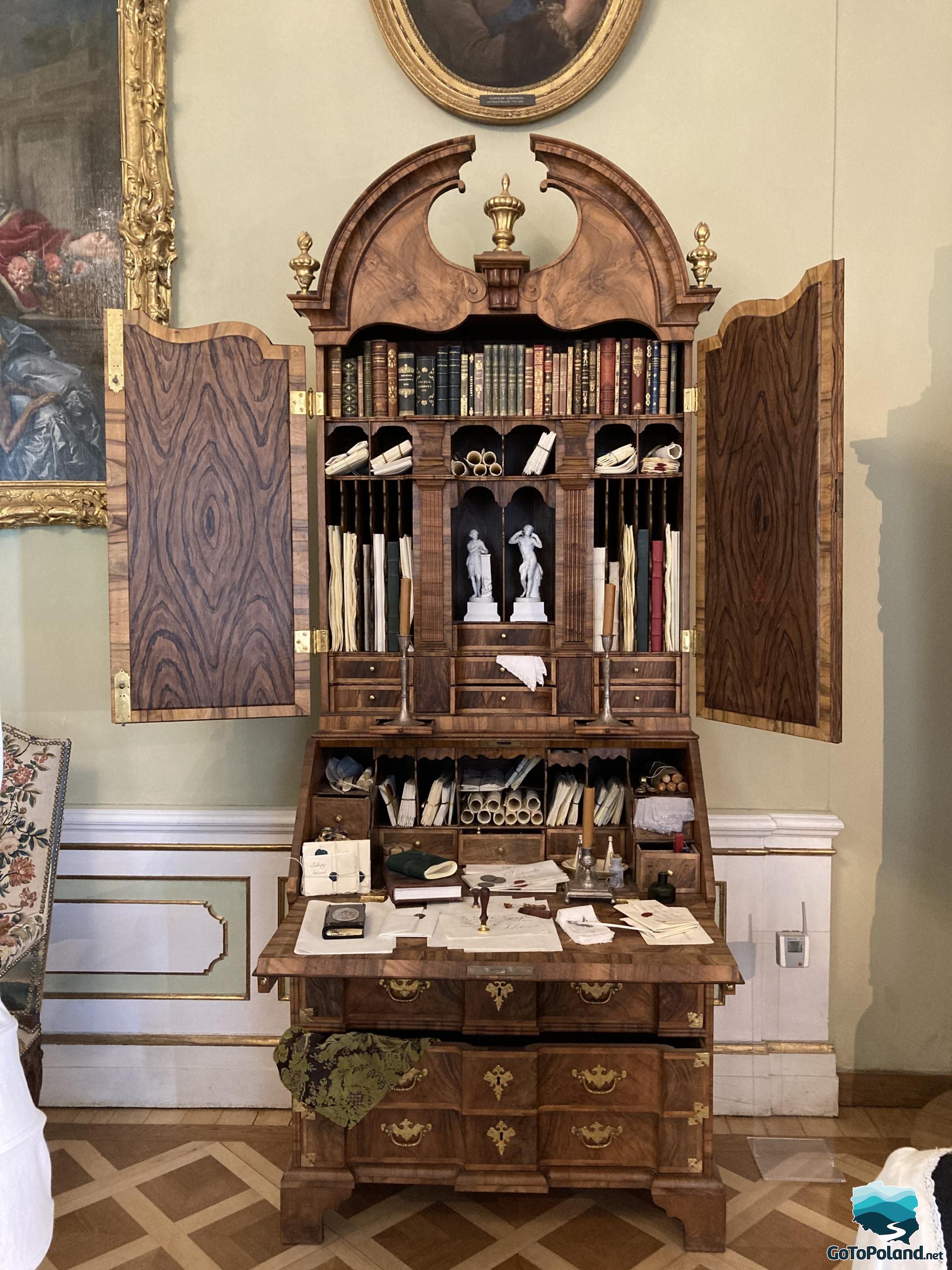
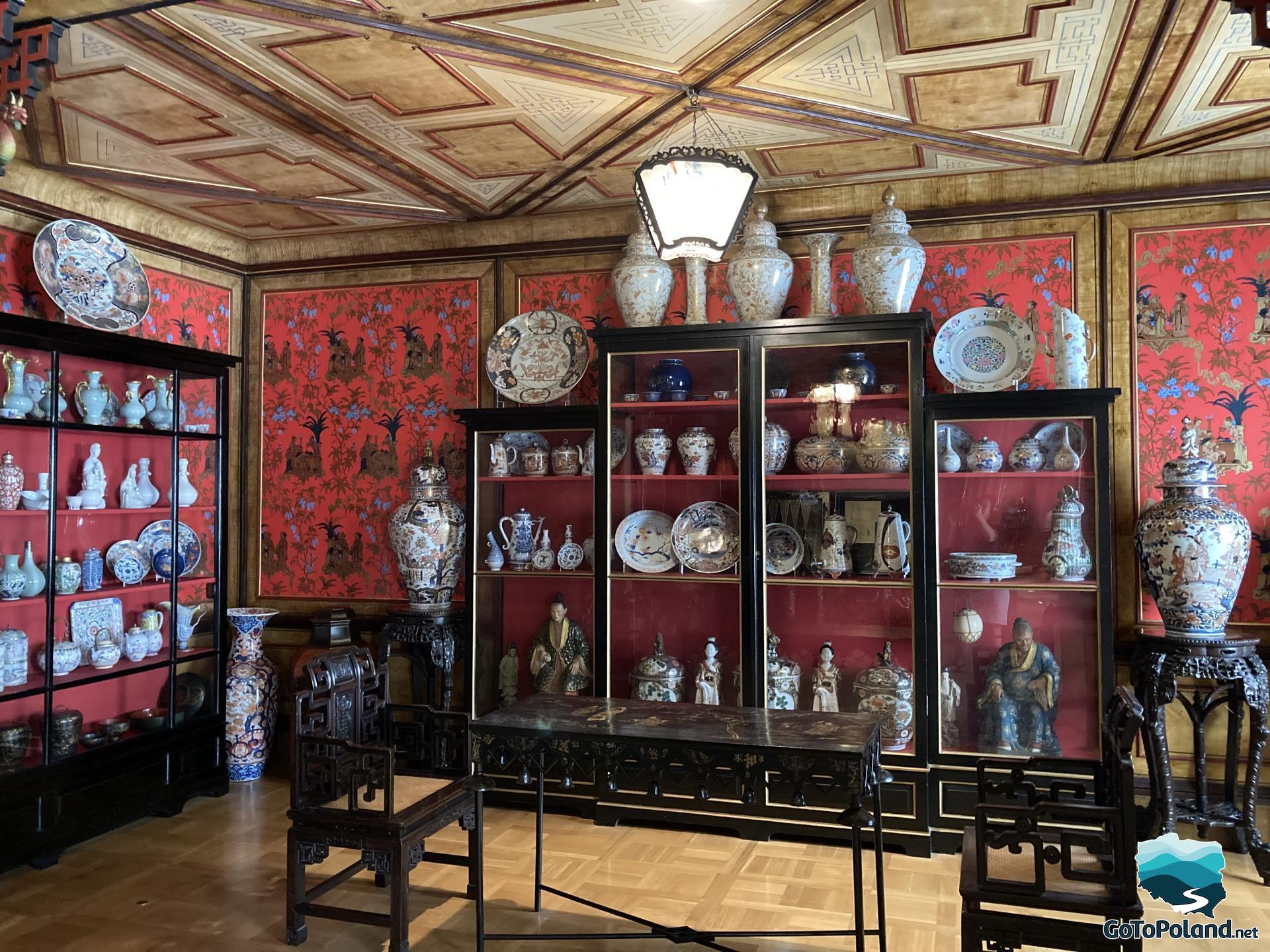
There were also unique ceilings.
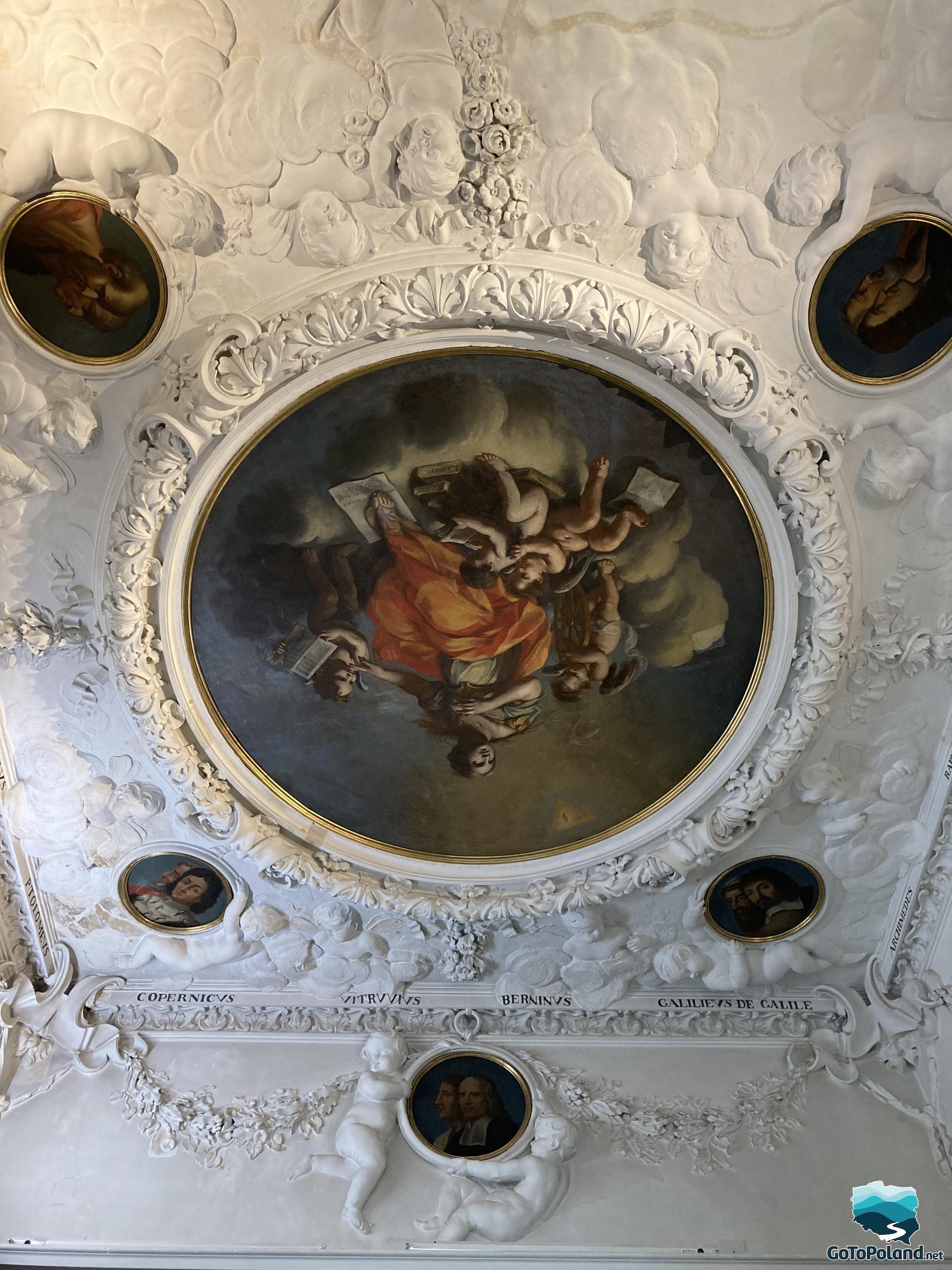

We are in the bedroom of Maria Kazimiera. The original bed did not survive, the basis for developing the arrangement and decoration of the reconstructed furniture were Daniel Marot's projects. Particularly noteworthy are great painted ceiling and the mirror placed on the dresser the so -called Queen Maria dressing table probably made at the end of the 17th century.

The most valuable picture at the Palace in Wilanów is the "Horse portrait of Stanisław Kostka Potocki" painted in 1781 by the great French painter of neoclassicalism, Jacques-Louis David. This is the only work of David in the Polish collections created in the Parisian Workshop of the Master.
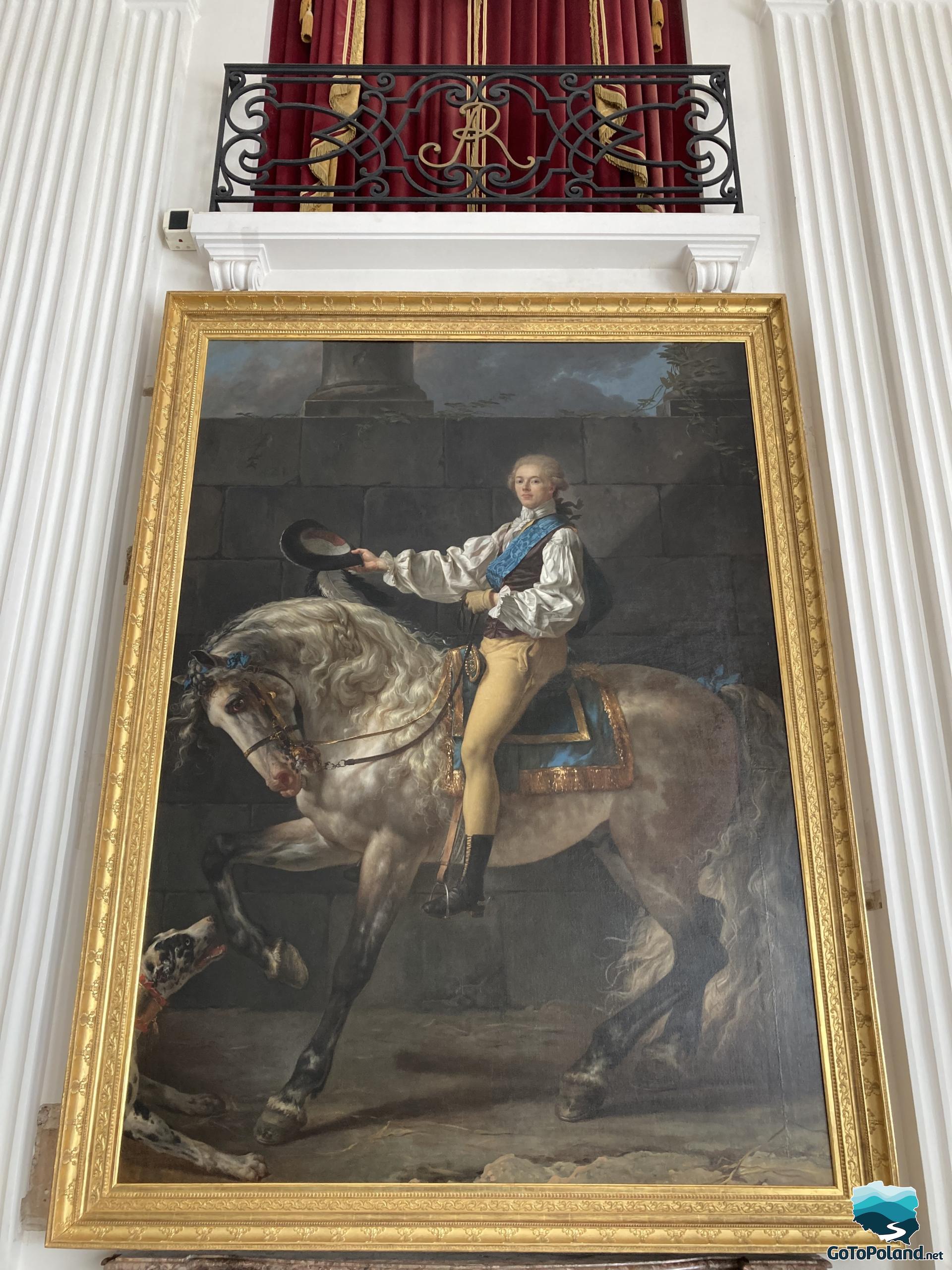

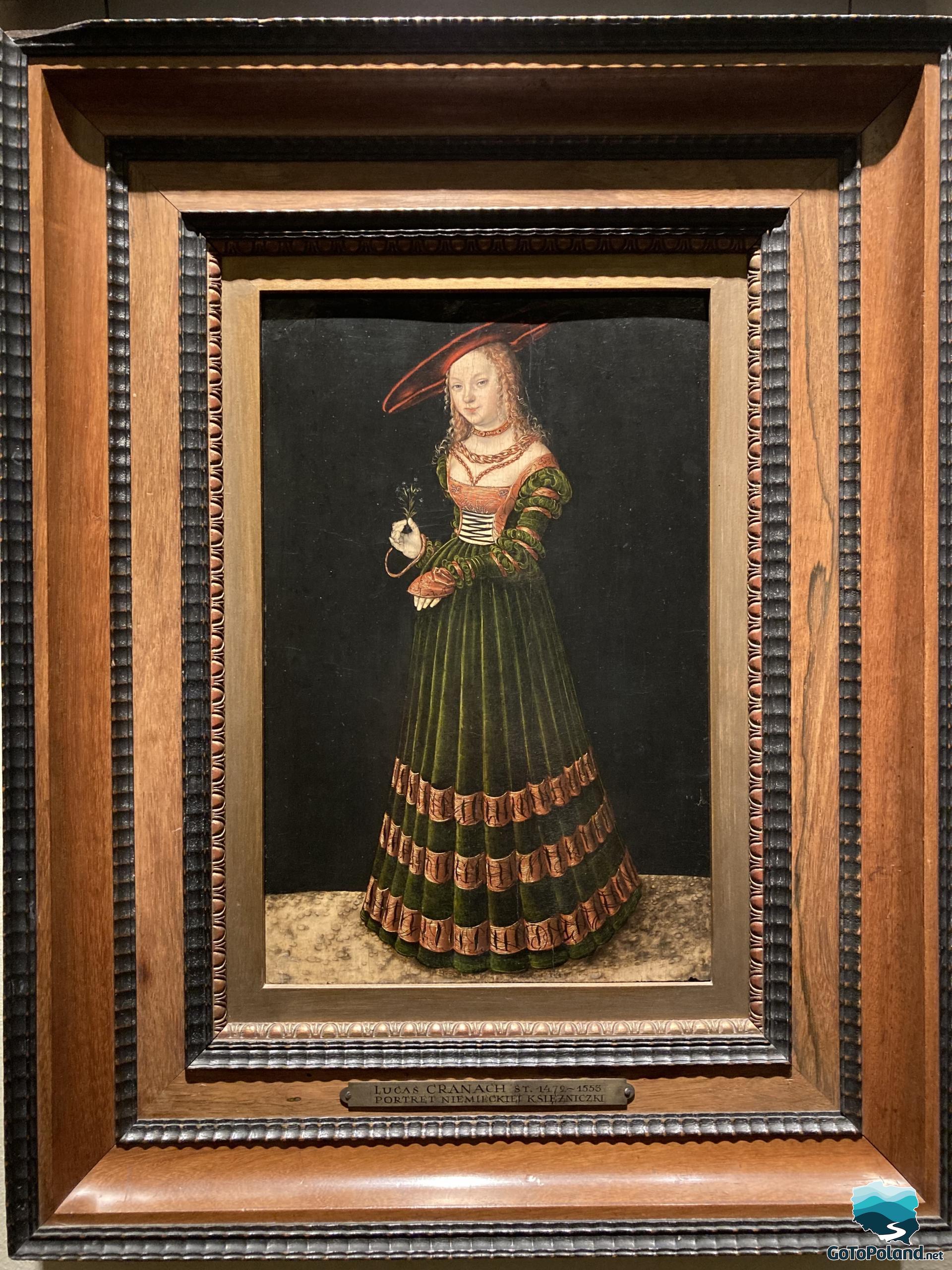
The building called the water tower is an interesting landscape attraction, located right on the lake. Probably you can rent a canoe or boat there, when we were there that option was closed.
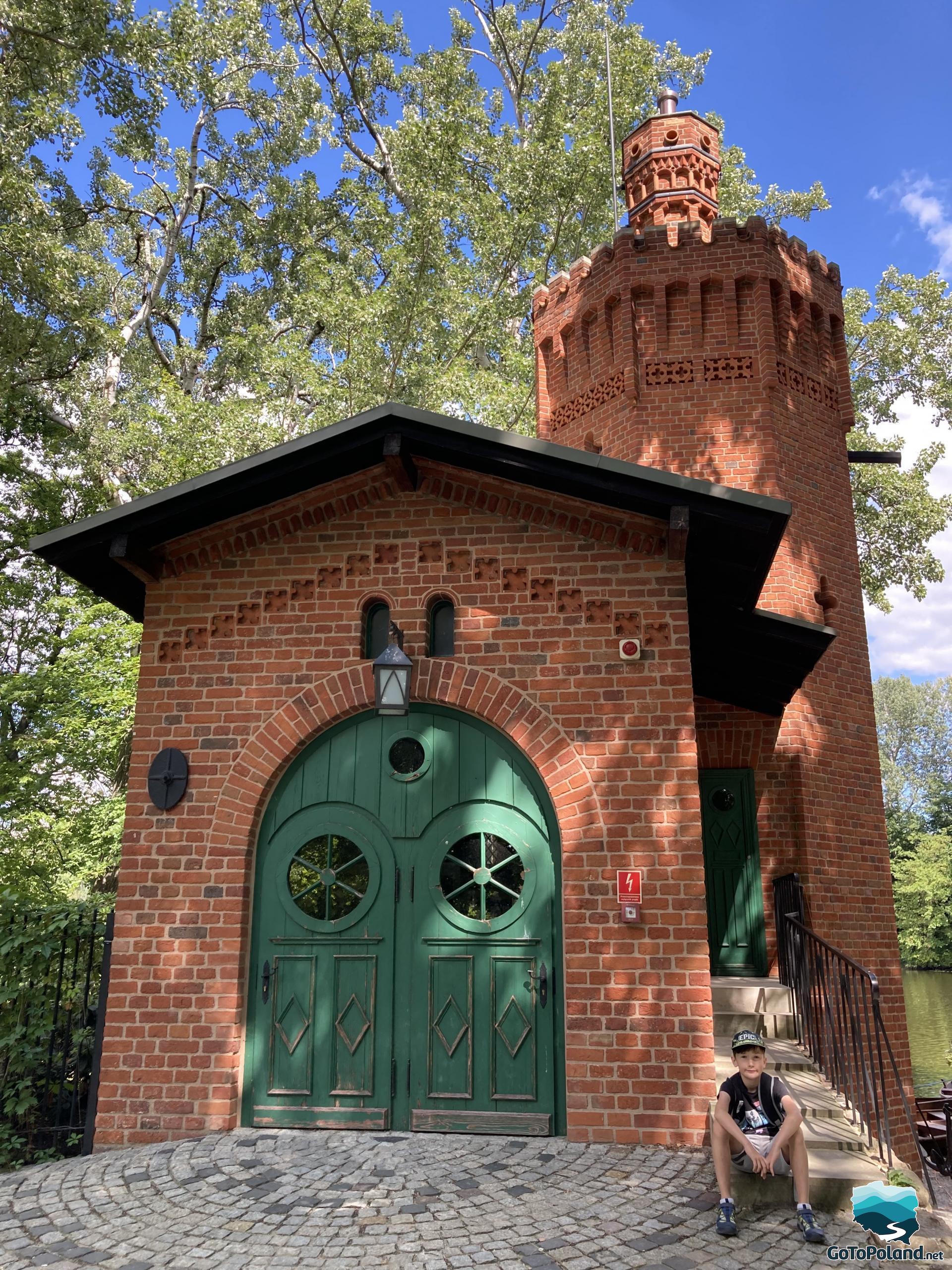
During our walk we got to the other interesting biulding.
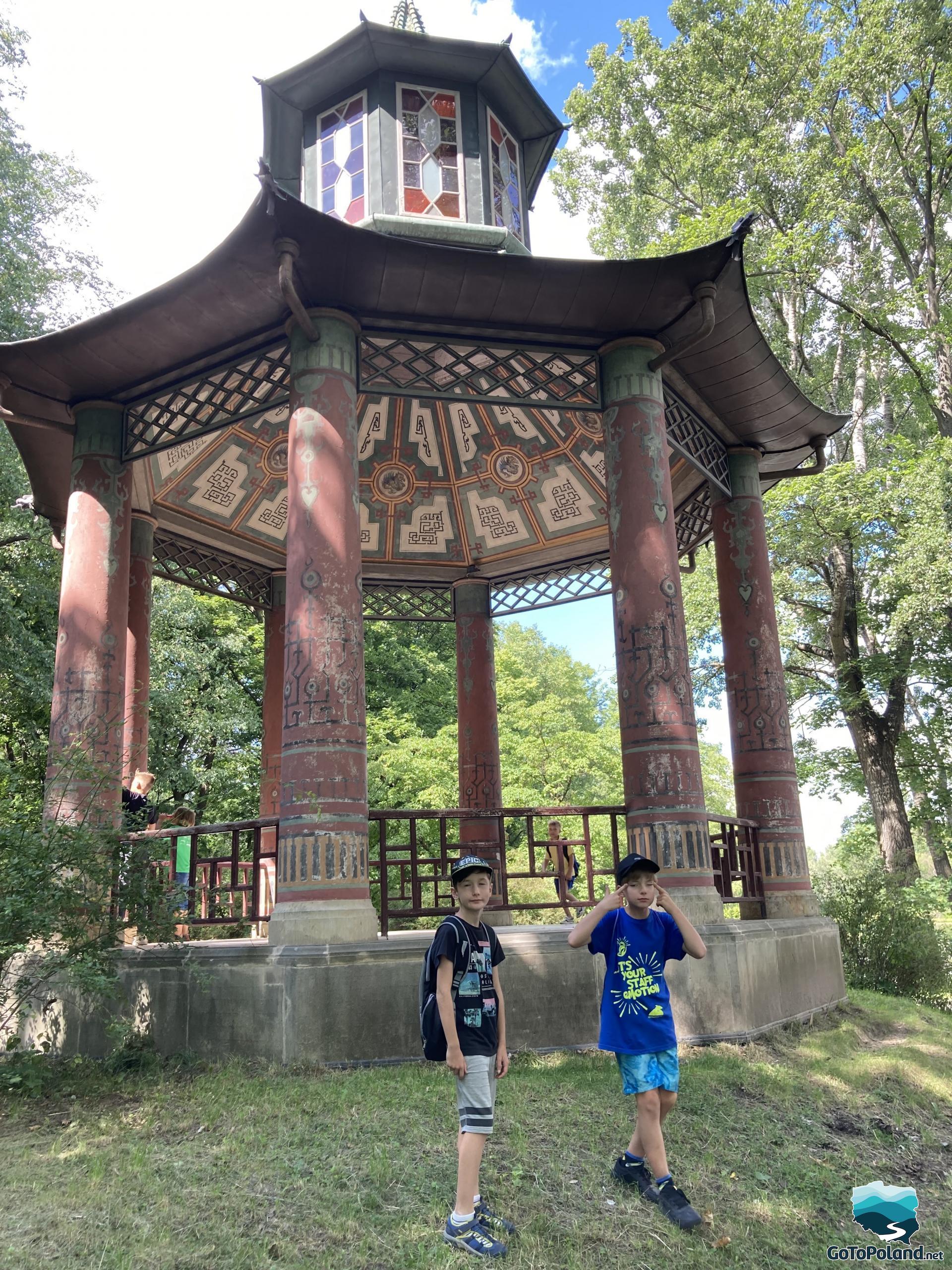
There are magnificent free-standing statues everywhere. There were also little ducks. The boys were delighted with them.

The Roman Bridge is a small bridge connecting the park with the island on Lake Wilanowskie - also belonging to the historic park and garden complex of the Royal Palace in Wilanów. The bridge was built at the beginning of the 19th century. I found out that it was in 1806.
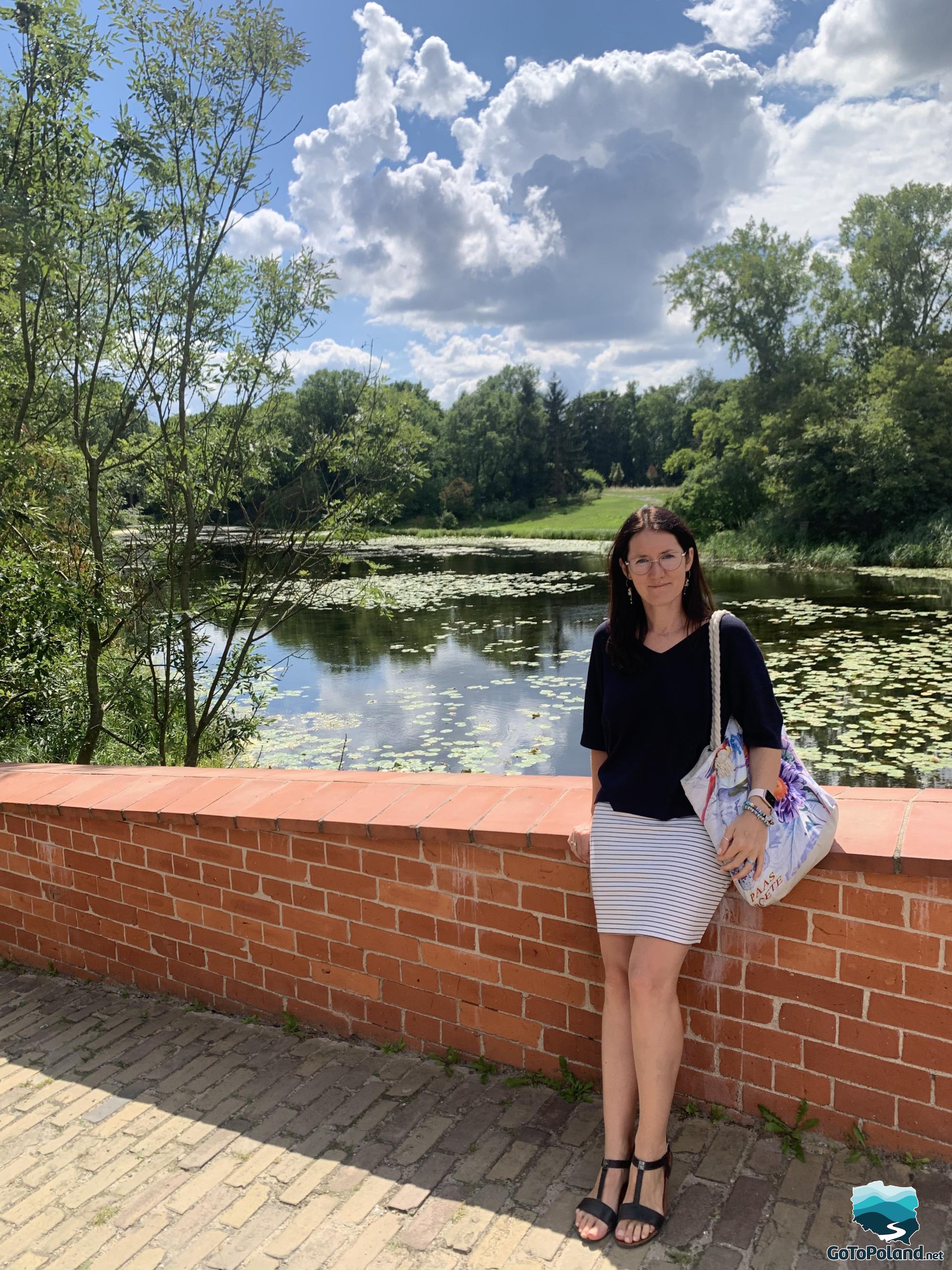
On an island in the Wilanów Park, there is a beautiful, classical monument commemorating the Battle of Raszyn in 1809.
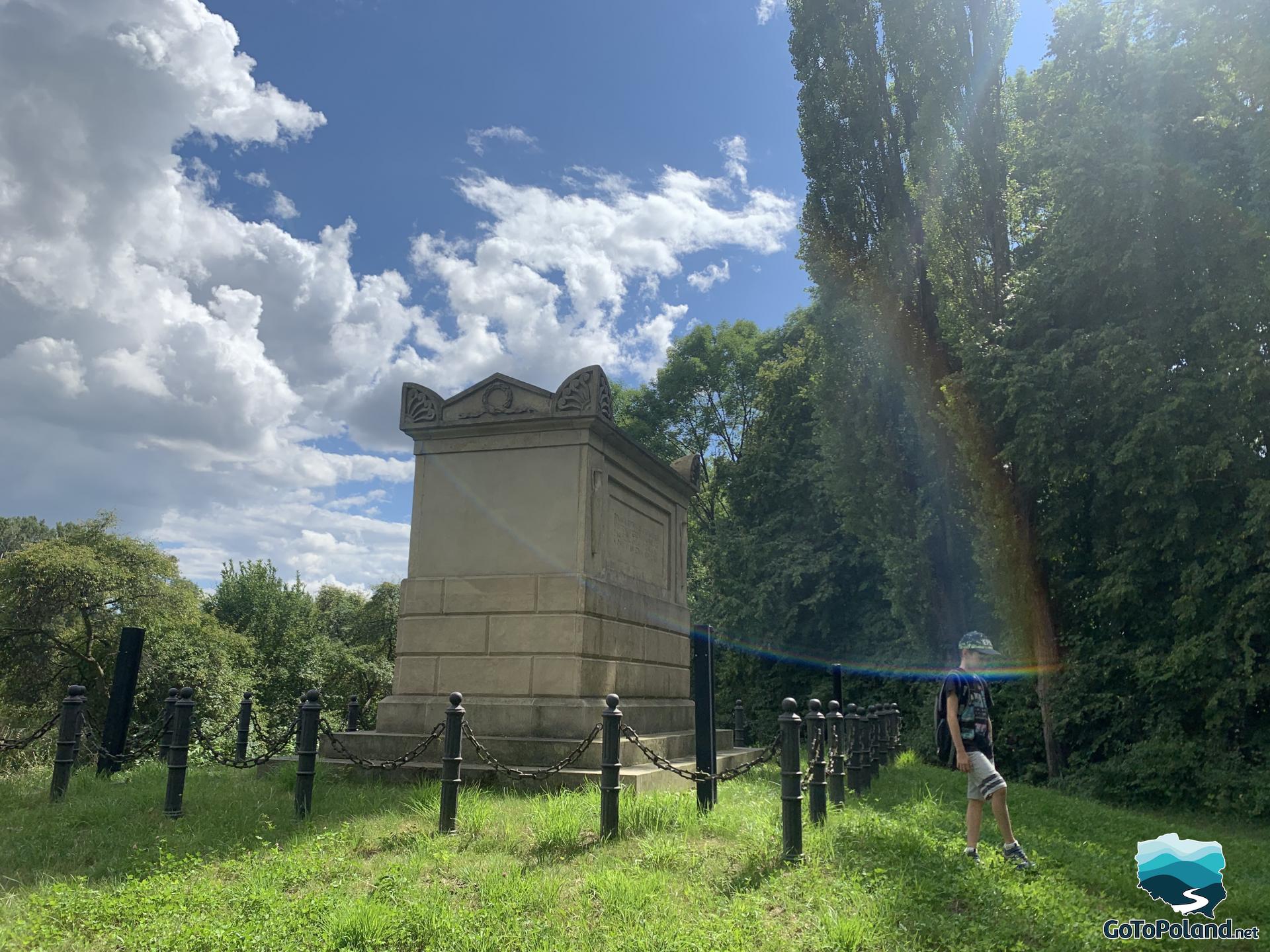
We also had a moment of rest. We came across a unique example of furniture: a wooden table with several chairs.
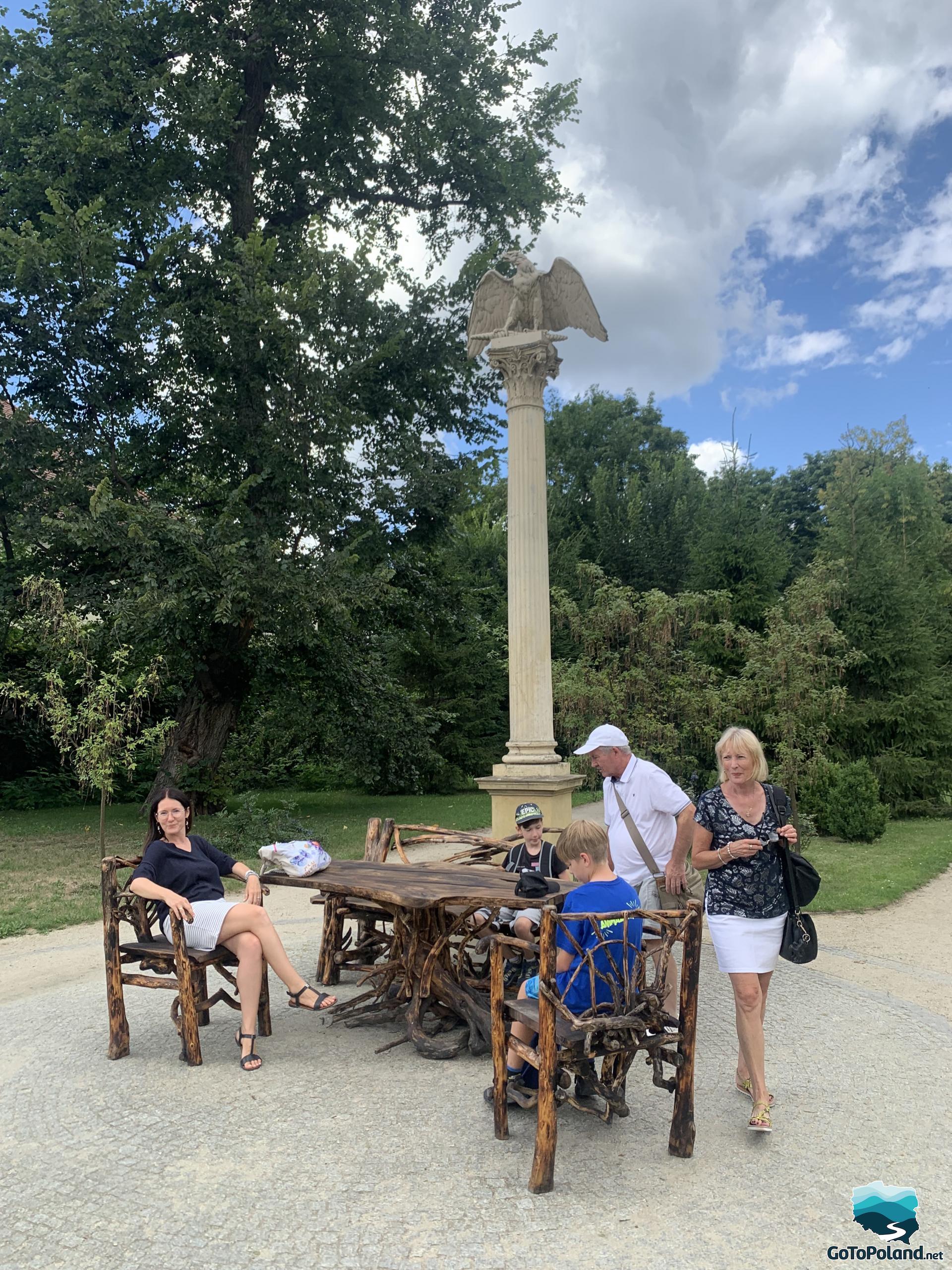
The second side of the Royal Gardens.
